


















Our conveyor systems seamlessly integrate into your existing setup, streamlining your production processes and reducing manual labor. Trust Span Tech to be your long-term partner in success.
• Tailored Solutions: Our team of experts understands the unique challenges of OEMs. We customize conveyor systems to perfectly fit your manufacturing processes, ensuring optimal performance.
• Advanced Technology: Stay ahead in the industry with our state-of-the-art conveyor technology. From automated sorting to precision handling, our solutions integrate the latest innovations to enhance your production lines.
• Robust and Reliable: Downtime is not an option. Our conveyor systems are built to withstand the toughest conditions, guaranteeing a continuous and reliable workflow for your operations.
• Proven Track Record: Trusted by leading OEMs, we have a proven track record of delivering excellence. Join the ranks of satisfied clients who have experienced unparalleled success with our conveyor solutions.



Packaging Three takeaways from PMMI’s 2024
to Top Report INDUSTRY
1/2 of new manufacturing jobs to remain open by 2033
MARKETING
12
Three strategies to achieve success. SALES
AI
The impact on OEM innovation and design
ASSOCIATION
32 PMMI Member Round-up
Another
EXHIBITOR’S
”
—Michelle Bryson, pg 20
PACK EXPO
38 Elevating Show Strategies How to 10x your PACK EXPO investment
PERSPECTIVES 40 From PC to iPC New demands on iPCs WOMEN’S LEADERSHIP 41 Communications
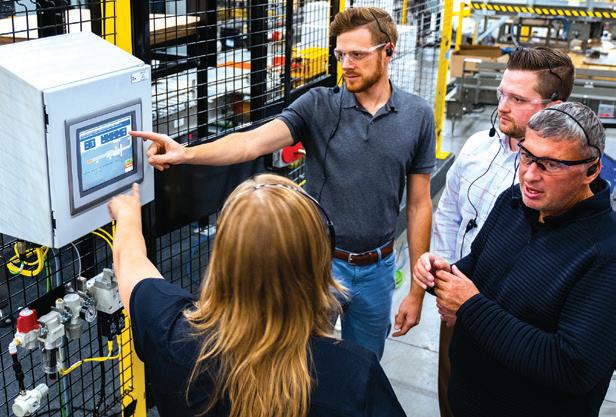



Three barriers that sabotage interactions WORKFORCE DEVELOPMENT 42 From Strategy to Action An X-factor in employee engagement NEW

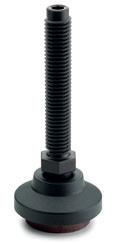
Compact pressure sensors and switches with 360° custom-color status display

www.vega.com/vegabar
256 colors
Individually selectable:
Measurement in progress
Sensor switching
Process malfunction
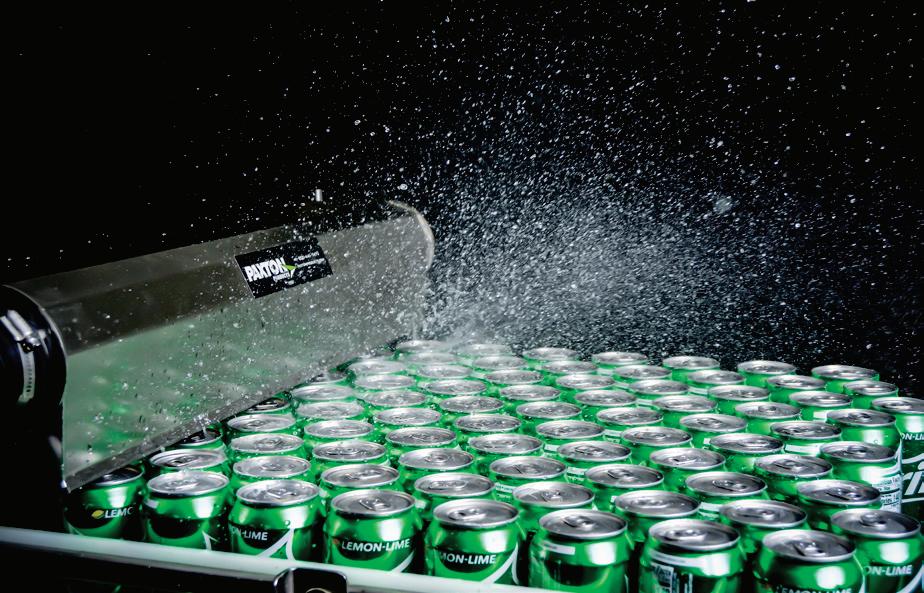
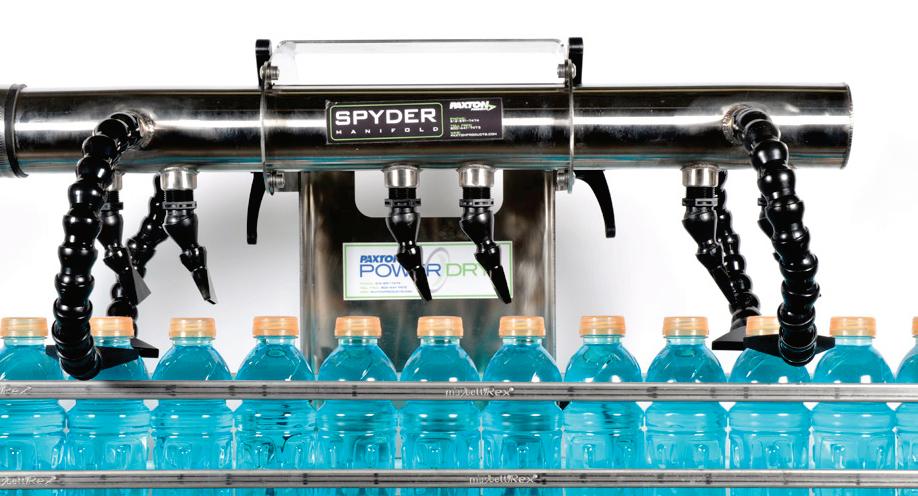
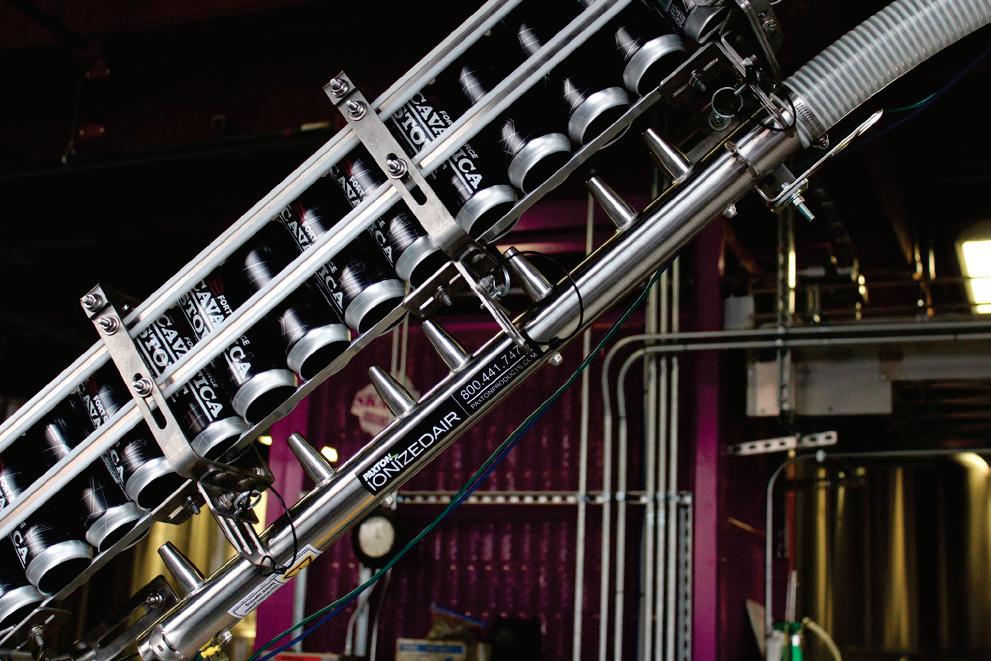

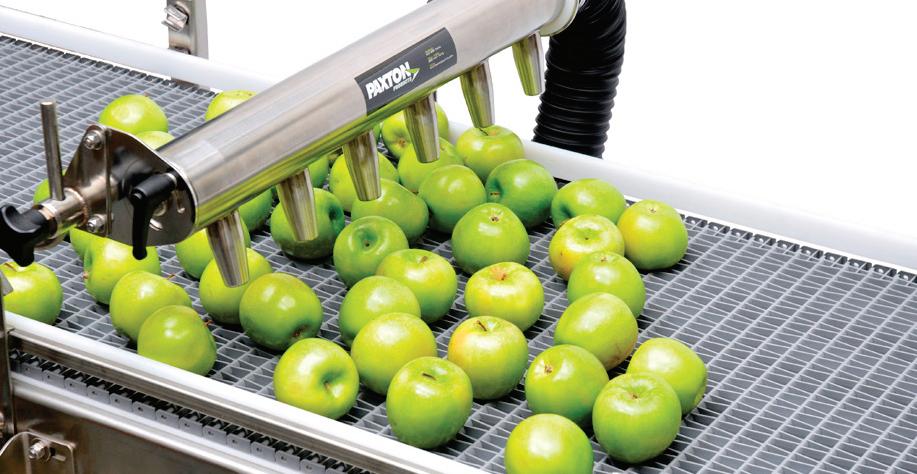

The official publication of PMMI OEMMAGAZINE.ORG
CONTENT
Sean Riley Editor-in-Chief sriley@pmmimediagroup.com | 571 266 4419
Casey Flanagan Digital Editor
Michael Smith Art Director
David Bacho Creative Director
ADVERTISING
John Schrei Vice President, Sales jschrei@pmmimediagroup.com
Lara Krieger Senior Manager, Print Operations lkrieger@pmmimediagroup.com
Janet Fabiano Financial Services Manager jfabiano@pmmimediagroup.com
PMMI Media Group
401 N. Michigan Ave., Suite 1700, Chicago, IL 60611
Phone: 312 222 1010 | Fax: 312 222 1310 www.pmmimediagroup.com
David Newcorn President
Elizabeth Kachoris Vice President, Digital
Kelly Greeby Senior Director, Media Operations
Jen Krepelka Director, Digital Media
Trey Smith Senior Director, Events
PMMI, The Association for Packaging and Processing Technologies
12930 Worldgate Dr., Suite 200, Herndon VA, 20170
Phone: 571 612 3200 | Fax: 703 243 8556 www.pmmi.org
Jim Pittas President and CEO
Joe Angel Executive Vice President, Industry Outreach, PMMI
Glen Long Senior VP
Tracy Stout VP, Marketing and Communications
Laura Thompson VP, Trade Shows
Andrew Dougherty Vice President, Member Services
SUBSCRIPTIONS
To subscribe to OEM visit: www.OEMmagazine.org/subscribe
To change or modify a subscription, please contact circulation@OEMmagazine.org
OEM EDITORIAL ADVISORY BOARD
Lisa Hunt CEO, Plexpack
Greg Berguig VP, Sales and Marketing, PAC Machinery
Rick Fox III Director, Engineering Services, Fox IV Technology
Brian Ormanic Senior Applications Engineer, Pearson Packaging Systems
Colin Warnes Director Sales Engineering & Project Management, ADCO Manufacturing
Tom Ivy CEO, FoodFlow Automation Solutions
Stacy Johnson VP Business Development, Hoosier Feeder Company

• Maximum support for small products
• Belt installation is fast and simple!
• Clean-in-place, USDA-Accepted
• Excellent belt tracking, positive drive design
Flights available for moving product up an incline u
• 70% open area allows for excellent flow-through
• Available in 10mm and 15mm meshes
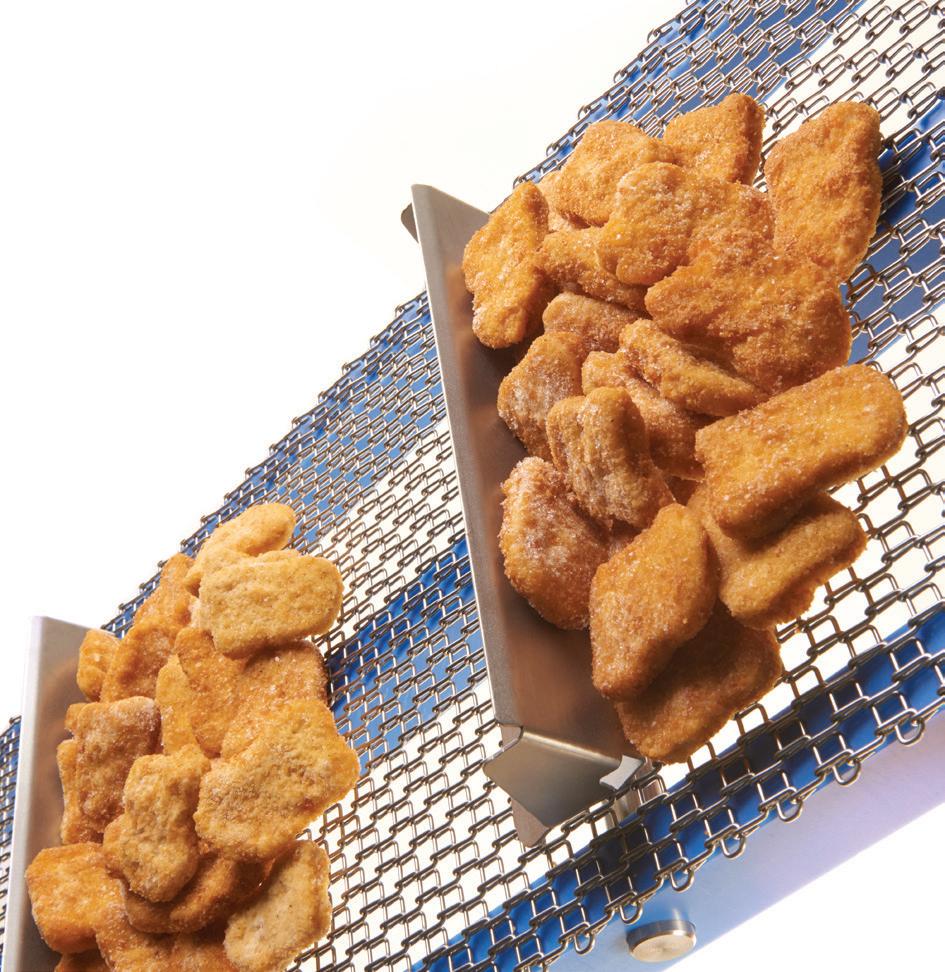

Economists, by nature, are not the most entertaining sorts. Fortunately for attendees of PMMI’s Executive Leadership Conference, Brian Beaulieu, CEO and Chief Economist of the Institute for Trend Research (ITR) Economics, has a knack for mixing humor with the ups and downs that are part and parcel of the U.S. and global economies. I was fortunate to sit down with Brian for a podcast that we partially transcribed for OEM Magazine (Economic Insights for Tomorrow p. 16) because of the powerful messages he has on the future into the 2030s.
It is an important story to share, as well as Brian’s comment that he doesn’t reveal these things to scare everyone but rather to prepare for what could be some pretty rough times as we exit this decade. Let’s just say we should all make sure we have our houses in order when the calendar switches into the 30s.
This issue also continues our AI in Manufacturing coverage with Exploring AI’s Possibilities p. 30. Love it or hate it, AI is here to stay, and author David McGraw explores the possibilities for the ever-changing technology’s impact on OEM product innovation and design.
In fact, our OEM Profile on IPM Automation (IPM: Over-Delivery in the Name of Uptime, p.24) includes ways that the Michigan-based dairy, food, and beverage packaging systems integrator is already using AI and plans to expand its role. Finally, don’t miss our New Member Profile on PSR Automation (p. 28), a classic American tale of an immigrant who brought his family from Guyana and eventually started his own packaging company.
I hope you enjoy the issue. If you have any story ideas or any comments at all, please don’t hesitate to reach out at sriley@pmmimediagroup.com. ■




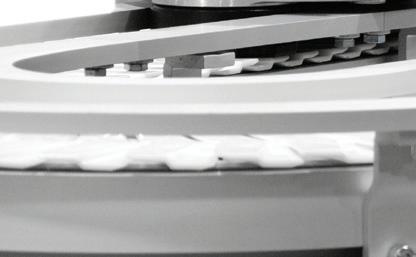





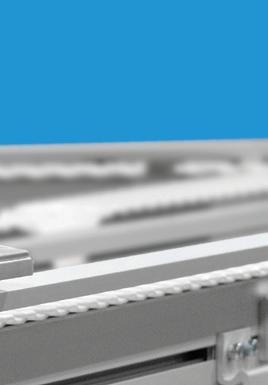








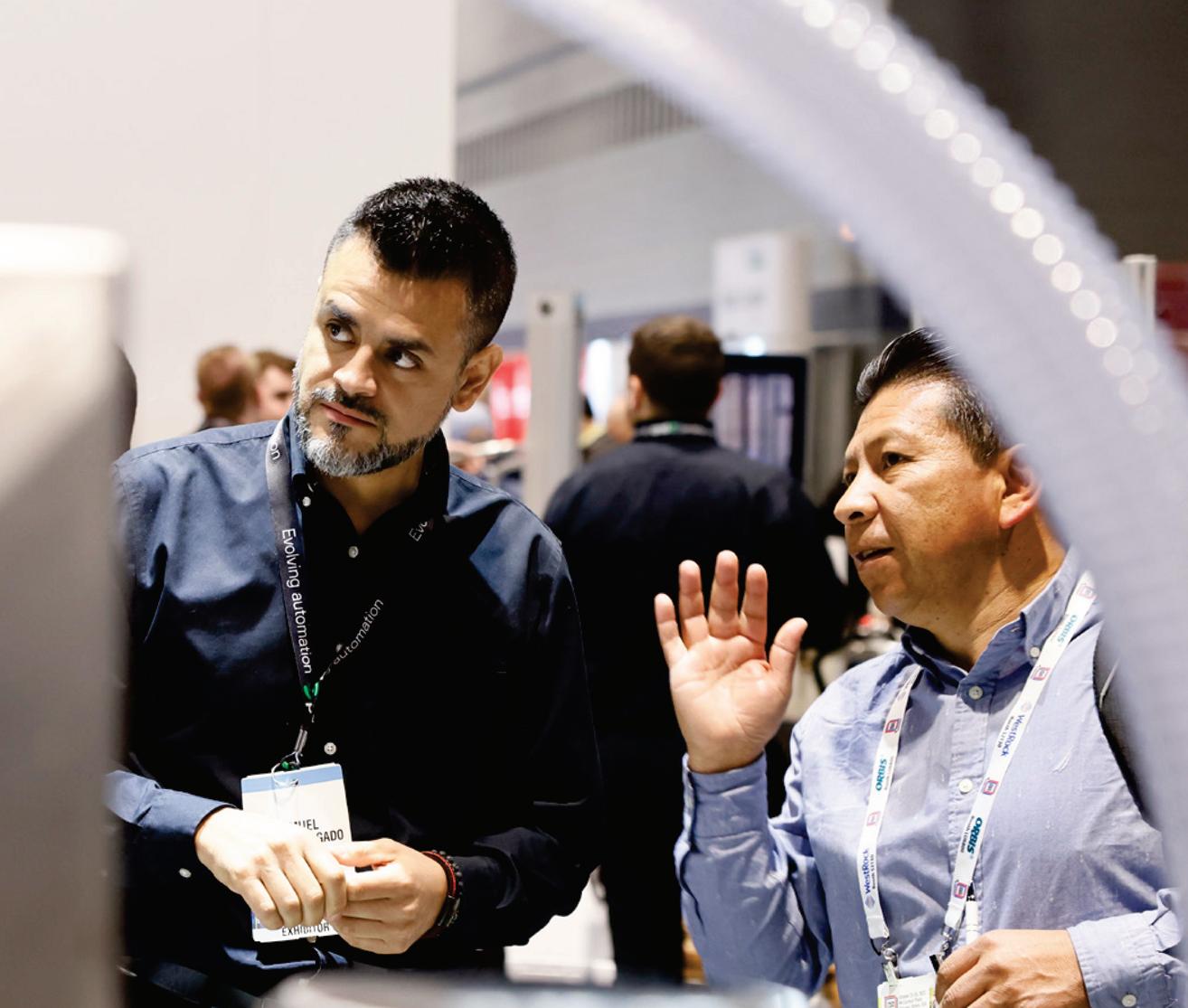

Exhibit space for PACK EXPO International 2024 is selling fast! Connect with 45,000 industry professionals from 40+ vertical markets looking for your solutions to get ahead of trends, move projects forward and solve their industry challenges.
of attendees attend the show to develop relationships with new suppliers like you!* of attendees are likely to make a purchase within 3-6 months of the close of the show* 88% 61%
*NOTE: Numbers based on PACK EXPO International 2022 Attendee Survey
From data management strategies to the rise of artificial intelligence, packaging and processing executives are targeting a digital future for their industry.
By Casey Flanagan, Digital Editor, PMMI Media GroupIf you are looking for a snapshot of current attitudes and priorities in packaging and processing, look no further than the 2024 Top to Top Summit.
In March, executives from across packaging and processing sectors, including end-users and OEMs across several industries, gathered to focus on the key themes affecting packaging and processing.
The subsequent report, PMMI Business Intelligence’s “2024 Transforming Packaging and Processing Operations,” details their responses to shine a light on the industry’s biggest trends, from data and analytics best practices to experiments with artificial intelligence (AI).
Data and analytics can be the key to major improvements in packaging and processing operations, but as industry executives at the Summit indicated, there are several routes to consider in managing this data.
Data management methods can range from manual entry into spreadsheets uploaded to the cloud to advanced analytics. Companies often manage on-site data using their warehouse management systems (WMS), enterprise resource planning (ERP), and material requirements planning (MRP) systems.
External data storage and analytics solutions cited by executive participants included SAP, Siemens, MVI, PowerBI, Microsoft SharePoint, MasterControl, DataBricks, and SolidWorks.
External maintenance and support are often used to ensure that data is stored and managed properly, and not all businesses had a single data management approach, with one end-user saying data is “separately managed for each division.”
“They still need to understand how to apply [AI] and ensure security of information.”
The use of the cloud for data management varies, but as one end user put it, companies are “moving into the cloud.”
About half of respondents use a combination of cloud services and on-site data storage. More than a third say they store data entirely in the cloud, and just under one-fifth keep all their data on-site.
Many of those saying they use a combination of on-site and cloudbased data storage are migrating to cloud-based systems. In some cases, this is because data is being consolidated, integrated,
and managed more effectively to leverage its value using analytics.
The cloud is also often used for data storage as an additional backup for disaster recovery. However, the importance of security was raised. One respondent said their company is “following the strictest safety process and legal rules,” and another noted there are “checks and balances before [data] goes into the cloud.”
One representative among the 20% of companies that keeps their data on-site explained, “we own the entire technology stack, hardware, software, and everything in between. We store our data in multiple physical locations and we air-gap our backups regularly.”
Cloud storage and easy accessibility of company data can bring major benefits, but some executives at the Summit were wary about its potential risk to security.
Data governance and security challenges emphasize the need for robust strategies to manage and protect collected and stored in data lakes. This includes concerns about interoperability and sharing data across different platforms and stakeholders.
One panelist at the Summit pointed to the importance of storing data in the cloud so it can be shared across organizations.
“The more data you have, the more value you’ll create at the data lake. The more people who have access to the data, the more that value can actually be realized,” the panelist said.
However, concerns over data security and confidentiality can prevent data from being shared and fully leveraged. These are often most acute within IT teams in factories and can lead to tension between IT and OT teams.
It was suggested at the Summit that action is needed to bring together IT and OT leaders and involve IT specialists more in discussions about data analytics.
AI advancements are a seemingly inescapable trend in modern culture, and as executives at the Summit indicated, it isn’t going away anytime soon in packaging and processing. There’s one question on the mind for many in the industry though – how to use it?
Summit participants indicated that most AI projects are still in their infancy, often in the research and planning stages.
Asked about whether they were using or looking to use AI within their operations, most respondents said yes. Projects range from initial research to adoption of various AI systems across several different departments.
More than a third of respondents are not currently using AI, with many planning to do so in the future of keen to learn more about it. However, others remain skeptical. One respondent said they are “currently drafting a corporate policy governing the use of AI for work and/or on work computers.”
Another participant explained
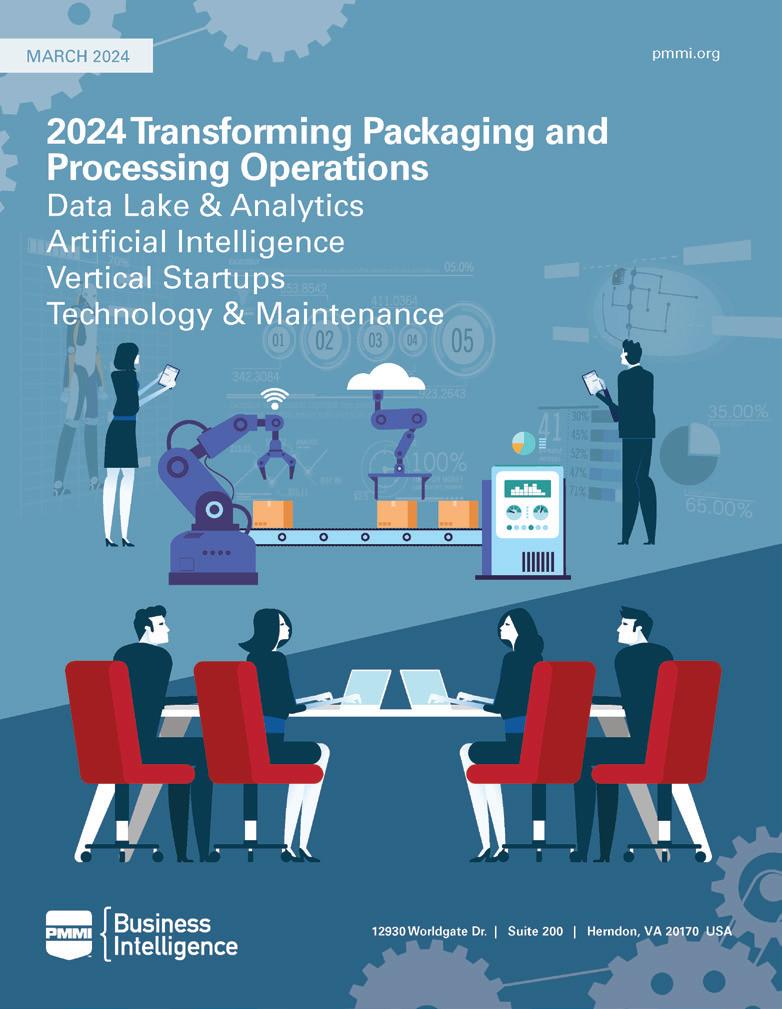
they “still need to understand how to apply [AI] and ensure security of information.”
In many cases, AI is not used in manufacturing operations, but is employed by other departments for tasks such as customer service and support, marketing, sales for business intelligence, and in HR to write job descriptions. Many of those using AI are utilizing it in production demand, planning and forecasting, and some respondents are employing it in data processing and analysis.
When AI is being used on the factory floor, it can include automation of repetitive tasks, machine vision and quality control, predictive maintenance, remote services and monitoring, and inventory management.
“We are actively using AI as a co-pilot to positions involving repetitive and in-depth data processing and analysis,” one respondent said.
Packaging and processing professionals are finding myriad applications for AI, and as respondents indicated, the success tends

to snowball. As AI projects have proven successful, some companies have started plans to expand its use beyond initial applications.
“We are leveraging AI and data analytics for vibration analysis today,” one respondent explained. “We will be leveraging AI to help our Reliability Engineering team move towards prescriptive maintenance in the future.”
One respondent already using machine vision AI added, “We are working with different solution providers to be able to implement this type of tool to optimize the supply chain and address energy efficiency issues. However, we are at a very experimental level.”
When asked about potential future uses of AI technology, responses at the Top to Top session included:
• Process optimization
• Reducing time to resolution and/or development
• Predictive maintenance
• Flow management and simulation/virtual twin manufacturing environments
• Machine vision inspection and quality control
• Modeling line performance and control strategies
• Production planning and forecasting
• Optimizing production equipment performance
• Operational improvements
• Logistics optimization
• Remote service
Whether through proper data management or experimental AI applications, the insights gathered from the 2024 Top to Top Summit underscore the pivotal role of digital tools in packaging and processing. ■
L.C. Bird High School’s RoboHawks robotics team leveraged industry sponsorships from BluePrint Automation and PMMI to compete globally.
By Casey Flanagan, Digital Editor, PMMI Media GroupThe L.C. Bird High School RoboHawks are gearing up for the challenge of a lifetime at the FIRST Robotics Championship, thanks in part to support from BluePrint Automation (BPA), PMMI, and the PMMI U Skills Fund.
The Virginia-based robotics team paved its path to the upcoming “Worlds” Championship in Houston, Texas, with an impressive performance in the Chesapeake District Championship, where it secured third place.
“The excitement is real,” says Katy Clarke, RoboHawks faculty sponsor and teacher at L.C. Bird, as the students prepare for their trip to the April 17-20 competition.
“Our robot hit challenges it has never hit before; we were down in 22nd place at one point, and it got very dicey,” Clarke recalls from the District Championship. “It was definitely a tale of perseverance.”
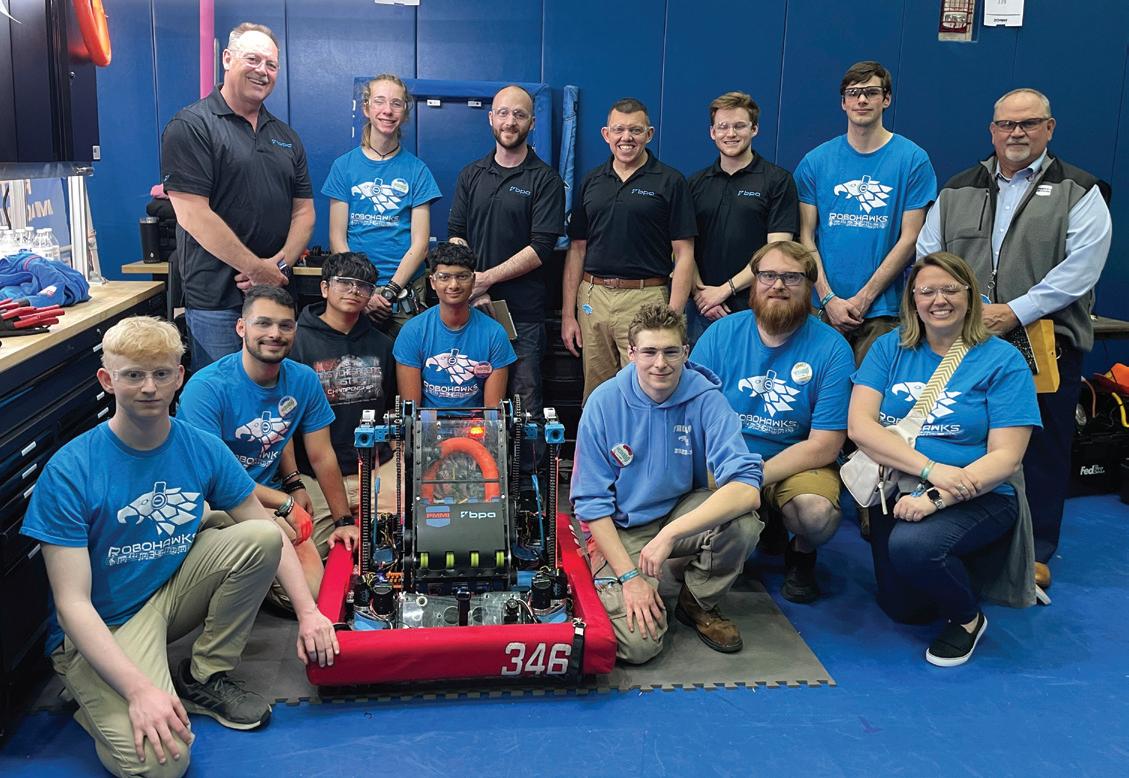
The RoboHawks’ journey to Worlds was made possible by a collaborative sponsorship between BluePrint Automation (BPA) and PMMI.
Just before the District Championship, three RoboHawks team members presented their robot design and the challenge ahead to BPA executives. At the end of the presentation, BPA offered $12,500 to help the team on its trip to Worlds. PMMI matched that donation through the PMMI U Skills Fund for a total of $25,000 to assist the RoboHawks.
“Without that [financial support], I genuinely can tell you we would not have the number of students going that we have,” Clarke says. We have 24 students going to Houston, and many of them are flying for the first time, so we’re very excited and grateful for it.”
BPA is continuing to back the team in the long term by offering its manufacturing capabilities for next year’s competition. As the team designs its robot for
next year, it can send CAD drawings to BPA, and the company will manufacture the parts at no cost.
The partnership between the RoboHawks and their industry sponsors is a prime example of how external support can propel educational programs to new heights and inspire the next generation of engineers.
“PMMI has a very strong ownership in developing the future workforce through the PMMI U Skills Fund,” explains Dana Greenly, director of member outreach at PMMI. “The goal is to equate what Katy’s team is doing to robotics and packaging and to make sure that we have a talent pool that is available to our member companies. We hope that through this, [students] will remember PMMI and the companies that are sponsoring their team as they go out and look for employment.”
With backing from BPA and PMMI, the RoboHawks are poised for success at the FIRST Robotics Championship, showcasing the tangible impact of industry support on educational initiatives and student inspiration. ■

uMANUFACTURING—which includes packaging and processing OEMs—is on the precipice of a large percentage of skilled jobs remaining unfilled, beyond even the dire circumstances the industry has faced since 2017.
At the current pace and without significant changes to address workforce challenges, half of the 3.8 million jobs expected between 2024 and 2033 will remain vacant, according to Deloitte and The Manufacturing Institute’s new report, “Taking charge: Manufacturers support growth with active workforce strategies.” The report is based on an online survey of more than 200 U.S. manufacturers, interviews with senior executives from manufacturing organizations of all sizes and across all sectors, extensive analysis of secondary data on labor supply and demand, and analysis from Deloitte’s economic team.
This isn’t a new revelation by any means, but with the U.S. manufacturing industry emerging from the pandemic on a strong growth trajectory, continued growth is expected over the next 10 years as companies meet evolving customer demands, de-risk their supply chains, and leverage government incentives and policies, unfulfilled positions could reach a breaking point.
Manufacturing is aware of the crisis, as 65% of respondents in the National Association of Manufacturers’ 2024 Q1 outlook pointed to attracting and retaining talent as their primary business challenge.
The demand for digital skills is accelerating as operations and products become more complex and information from smart connected devices and systems needs to be integrated and analyzed.
“Manufacturers recognize that the workforce is evolving,” says — Carolyn Lee, president and executive director, The Manufacturing Institute. “Pandemic-driven shifts have already created hundreds of thousands of new jobs, and now we are seeing increased demand for digital skills that need to be met or risk further widening of the talent gap.”
“Companies must prioritize technology, training and talent development, and the investments that are
PMMI has joined Ameripen as an Associate Member, strengthening the relationship between the two organizations. The announcement was made in April at PMMI’s Executive Leadership Conference and Ameripen’s Annual Summit. This will translate into more coordinated work on legislation and other initiatives related to Extended Producer Responsibility. This will also strengthen PMMI’s existing work with Ameripen and the value the relationship brings to PMMI Members, for example:
• Ameripen is a valued presenter at several PMMI events
• Dan Felton, Executive Director, brings his expertise to the advisory committee for PMMI Media Group’s Packaging Recycling Summit (Sept. 16-18; Anaheim, California)
• PMMI and Ameripen collaborated on the Packaging Compass project, released in early 2023 and is set to be updated this year
• Ameripen will participate in the Sustainability Central Stage at PACK EXPO International 2024. ■
driving growth will also require the industry to build out a talent ecosystem,” says Lee. “With investments in partnerships, apprenticeships, and education, and prioritizing a more diverse and inclusive workforce, a whole host of new talent will be on the factory floor and driving the next wave of growth.”
More than 9 in 10 surveyed manufacturers said they are forming at least one partnership to improve job attraction and retention, and on average, they are partnering with four or more. The top five partnership types among respondents are with technical colleges (73%), industry associations (58%), universities (48%), state and regional economic development agencies (47%), and K-12 schools (44%).
Many partnerships are geared towards building, leveraging, and supporting training programs — helping address the need to develop new talent. Nearly half (47%) of those surveyed in research by Deloitte and the MI indicated that apprenticeships, work studies, or internships at manufacturing companies would be the most effective way to increase interest in manufacturing as a career choice. ■
Most packaging and processing marketing teams are minimally sta ed; discover three e ective strategies to help succeed and reduce stress.
Sharon Taylor, Principal Marketing Strategist, PMMI Media Group

Are you a part of a small marketing team? You’re not alone! According to a recent survey of PMMI members, the average size of marketing departments at companies up to $50 million is just 1.5 marketers. But don’t let your limited resources hold you back. Discover three effective strategies to help you achieve success and reduce stress in your role. Keep reading to learn more.
In a fast-paced work environment, it’s all too common to find yourself juggling multiple responsibilities without making significant progress on any single task. This scattered approach can lead to inefficiency and increased stress. To address this challenge, it’s essential to establish a more organized and systematic approach to your workload.
Start by creating a comprehensive list of all your tasks and responsibilities. While handwritten lists can be effective, using online project management tools such as Asana, Monday.com, or Notion can provide enhanced organization and collaboration capabilities, especially as your team grows. These tools offer a range of features to help you track tasks, allocate resources, and prioritize assignments effectively.
Once you have your tasks outlined, prioritization is key. Apply the principles of the Eisenhower Matrix to categorize your tasks based on their urgency and importance. This method allows you to identify which tasks require immediate attention, which can be scheduled for later, what can be delegated to others, and what can be eliminated from your workload.
To ensure that you have dedicated time to complete your tasks, consider implementing time-block scheduling. By setting aside specific time slots for focused work, you can guard against distractions and

interruptions, ultimately improving your productivity. Additionally, this method provides valuable insights into how long different tasks take to complete, helping you better manage your time in the future.
In addition to these organizational strategies, consider leveraging AI-powered note-taking tools, which are increasingly integrated into many video conferencing platforms. These tools can be valuable for summarizing meetings and capturing key action items, saving you time and providing clarity on your tasks.
QUICK TIP: Try recording a meeting with just yourself and use the AI notetaking feature to create a summary of your thoughts and ideas. This hack can help bring clarity to planning projects or drafting content.
Managing digital clutter is another essential aspect of improving efficiency. Consider using a dedicated notetaking app to save inspiring articles, creative examples, and marketing resources, allowing you to review them at a later, scheduled time. Similarly, create email folders and rules to automatically categorize incoming messages, making managing and prioritizing your communications easier.
Implementing these strategies can create a more streamlined and efficient workflow.
Outsourcing can give your marketing team additional skills, perspective, and manpower. However, choosing what to outsource and who to hire can be challenging.
Agencies offer value for expertise that you may not have internally. Smaller companies should note that agencies have minimum spending requirements. However, if you have the budget, agencies can be valuable partners worth investing in. They have solid project management processes that keep you and your team on track.
Hiring an independent consultant who functions as their own agency is a lower-cost option for companies on a budget. However, independent contractors may take longer to complete your project and require more participation.
Freelance or contract support can also help meet a specific ongoing need, such as copywriting or design. It may also serve as a way to test whether a full-time employee role is needed. Leverage your network or use resources such as Fiverr, UpWork, or 99Designs.
Regardless of your chosen outsourcing option, it will require planning and ongoing support. If you have the need and budget, outsourcing can free up your time, provide a better output, and be a valuable investment.
Networking is not just for job seekers or those with extra time on their hands. It offers numerous benefits for small marketing teams. Building a strong network provides access to advisors and mentors who can offer valuable insights and solutions.
Mentorship can be formal or informal, and it’s not as daunting as it may seem. You can find mentors within your organization’s mentorship program, among former managers, colleagues, or connections in your network. Joining an official mentorship program is another option, as these programs often pair you with a suitable mentor.
Associations, such as PMMI, are valuable networking, mentorship, and professional development resources. PMMI hosts events like the upcoming PMMI Roadshow and offers networking groups like the MaX Marketing Share Group.
Beyond PMMI, look to industry associations, local communities, and marketing-specific organizations like the American Marketing Association for networking opportunities. Additionally, consider joining user groups for the technologies your team uses, such as Adobe or Salesforce.
Finally, always connect with individuals on LinkedIn to centralize your network and easily communicate with them. Building and nurturing your network can lead to valuable insights and recommendations when needed. ■




















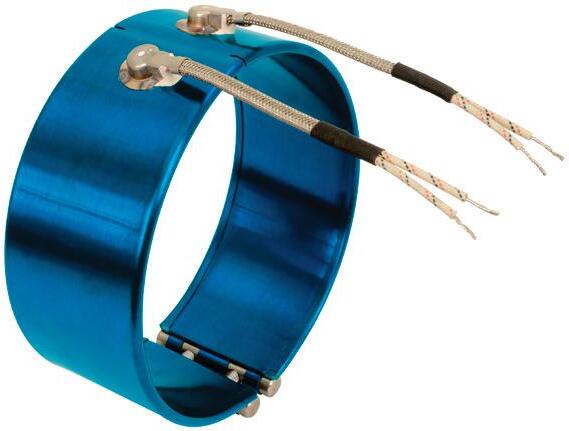




The art of understanding customer needs beyond the traditional product-focused sales pitch.
Matthew Neuberger, President, Neuberger & Company, Inc.

In the competitive landscape of the packaging industry, sales professionals are constantly seeking innovative strategies to enhance their effectiveness and drive more sales. One emerging transformative approach involves a deep understanding of customer needs beyond the traditional product-focused sales pitch. This article draws inspiration from rethinking what the term value proposition means.
Traditionally, sales efforts in the packaging industry have been heavily centered around the specifications of the products - their “speeds and feeds.” This approach, however, often falls short of addressing the deeper needs of customers, particularly those in companies dealing with consumer packaged goods (CPGs) and similar sectors. A pivotal realization came from a story about a paint manufacturer that understood its products’ actual value lay not just in the quality of the paint, but in the labor hours, it saved companies. This insight shifted their sales narrative from merely highlighting product features to demonstrating how their paint could alleviate the frustration of labor management and costs. The less they talked to their customers about paint and the more they spoke of labor management, the more they sold.
At the heart of this customer-centric approach is understanding the “job to be done” - a principle emphasizing the importance of grasping what the customer is ultimately trying to achieve and the obstacles they face.
This method requires a departure from the conventional sales script focused on product capabilities, urging sales teams to engage in more meaningful conversations with their clients. Your PowerPoint presentations will get you in the door. However, they will not sell your equipment. In fact, they will make you look more like your competitor – yes, YOU could be inserting competition, indecision, and pricing pressure simply by sharing your information without the correct value proposition attached. How would you know? Look at what’s stuck in your pipeline.

Evaluate the dollar value of annual discounts and concessions provided.
When sales professionals master the art of understanding and articulating the customer’s job to be done, they transcend the role of mere vendors to become trusted advisors. This transition is crucial in a market where purchasers increasingly ask for engineers instead of salespeople. They perceive engineers as problem-solvers who grasp their challenges’ technical and operational nuances, unlike traditional sales representatives whose pitches might seem superficial.
A standard indicator that a sales approach is misaligned with customer needs is when discussions quickly pivot to price comparisons with competitors. This scenario often signifies that the sales message has failed to resonate deeper, leaving the customer to default to price as the primary decision criterion.
Conversely, price becomes a secondary consideration when a sales professional successfully communicates how their solutions can address the customer’s specific challenges and aspirations. The essence of this customer-centric sales philosophy is empathytaking the time to understand not only the technical specifications of the customer’s challenges but also how they affect them personally and professionally.
This approach offers a powerful paradigm shift for sales professionals in the packaging industry. By focusing on the customer’s broader objectives and becoming a source of valued advice and solutions, sales teams can build deeper relationships, differentiate themselves from competitors, and ultimately achieve tremendous success.
Sales professionals are responsible for bridging the gap between the customer’s challenges and how their products or services can make a meaningful difference. This elevates the sales conversation and positions sales professionals as indispensable partners in their customers’ success. ■
Learn more about PMMI’s Certified Technical Sales Professional Program here: oemgo.to/ctsp2023
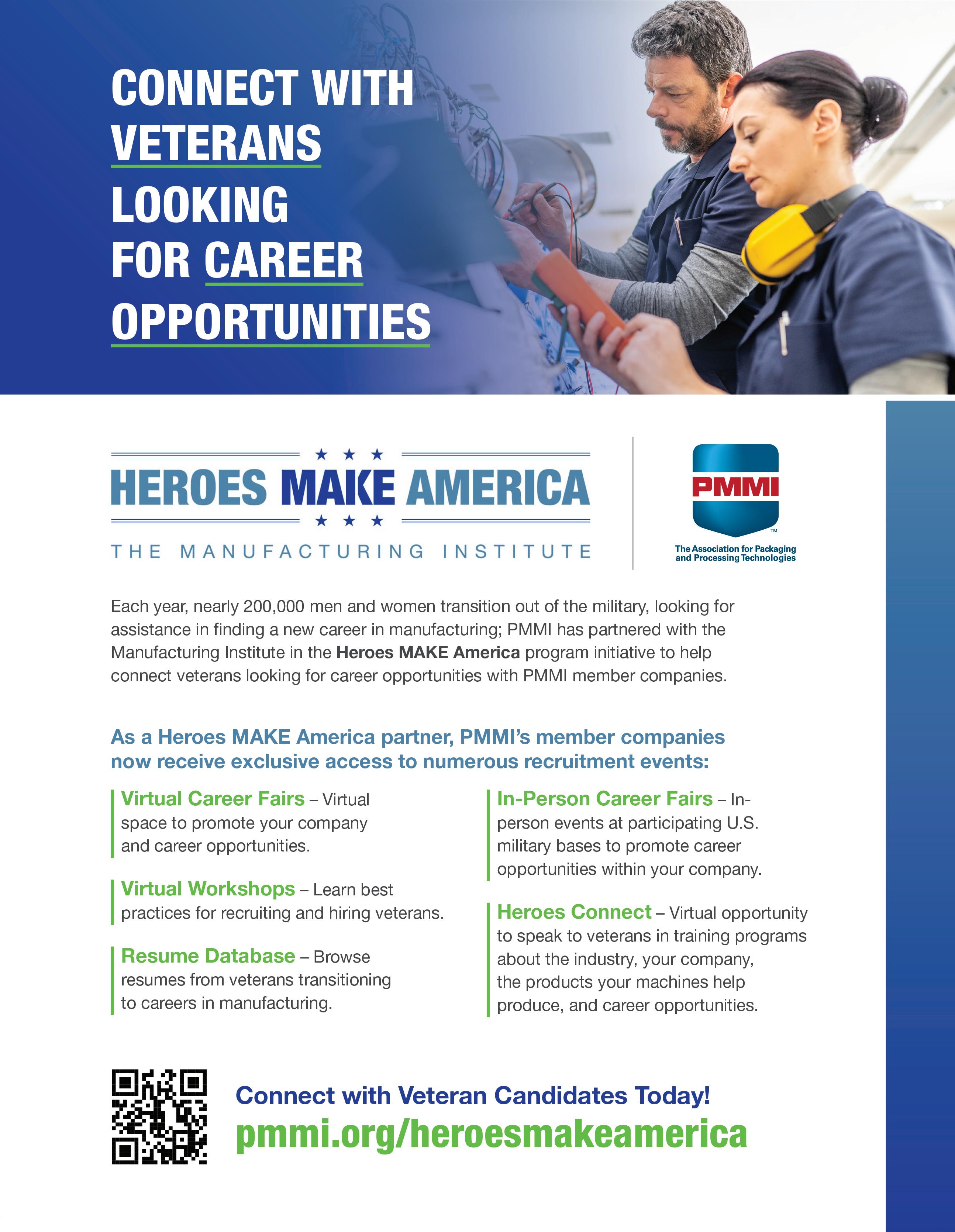
A candid discussion on the impact of elections, inflation, and uncertainties with the global economy on packaging and processing.By Sean Riley, Editor-In-Chief
This Spring, PMMI held its Executive Leadership Conference (ELC). One of the highlights of the conference is the ITR Economic Outlook, which provides a roadmap for 2024 and beyond, both in packaging and processing and around the globe. After the ELC, OEM Magazine Editor-in-Chief Sean Riley sat down with Brian Beaulieu, CEO and Chief Economist of the Institute for Trend Research (ITR) Economics, for an unPACKed with PMMI podcast. The following is a portion of their discussion edited for space and clarity. The entire podcast is available at pmmi.org/ podcasts.
Sean Riley: You spoke at the Executive Leadership Conference, and right up front, you said that the economy is going to skate by in ‘24, but then you have 25 through 28 as good years that are looking up. What exactly is going to happen there?
Brian Beaulieu: It’s tough to talk about what exactly will happen there, but the general trend is that the economy will improve in ‘25, ‘26, ‘27, ‘28 because we don’t see any major stumbling blocks. In my world, we look for economic imbalances and don’t see any imbalances.
We see consumer incomes continuing to go up. The trouble spots, like deficit spending, are future problems. They’re not likely to impact us in that short period. The Fed looks like they’re done with quantitative tightening. I’m not sure they’re going to go into quantitative easing, but the tightening portion is behind, which is how we’re reading the trends.
projecting to be a massive downtick once we hit the 2030s.
Brian Beaulieu: One of the things that everybody needs to do is figure out how they can obviate labor in economic speak, which is how we can employ technology, not only on the processing floor or distribution floor but in information systems and information flows in the office. AI is just a small part of it. It’s not just AI, but the more I can get automation to replace people, the stronger I am going to be going forward because people are going to be the single most expensive and limited in supply element to what we do.
Sean Riley: You noted an interesting trend: as you said, manufacturing is paying almost too high or very high wages. On the other hand, manufacturing is having a very hard time getting labor. How do you balance those two elements where they need to pay these higher wages to retain labor, but they can’t find any labor to begin with?

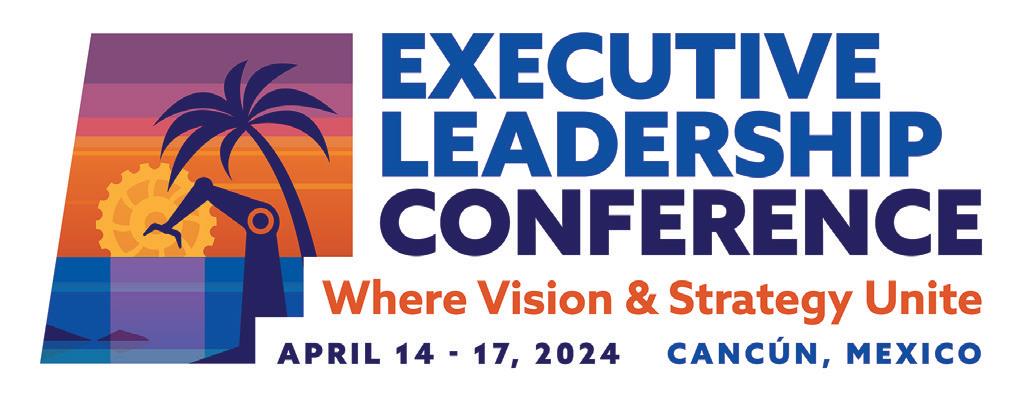
Brian Beaulieu: A lot of it can be circumvented by having some sort of career path available to people, even on the manufacturing floor. If you can show them, they’ll learn these skills, which will get them into the higher wages. Then, at least, you’re matching what they can do with the higher wages instead of just throwing money at a very serious problem. Culture has a lot to do with retaining people, and the geographic market you’re talking about also does. So there’s no one fix, but culture is extremely important.
Sean Riley: I was thinking about how packaging and processing can prepare for that or make the most of that little uptick before what ITR is
I believe affordable housing in the area where you’re manufacturing is absolutely important. And there are some political things you can do there. Some

“. . . people are going to be the single most expensive and limited in supply element to what we do.”
of the folks I know are even investing in that. They are investing in housing infrastructure along with the cities or the towns to make some things happen in that regard.
Those aren’t things that we used to have to contend with in the 1970s, 1980s, and 1990s. This is just a whole new paradigm.
Sean Riley: That’s very interesting. I hadn’t thought of housing and things like that as part of the whole package.
Brian Beaulieu: I tell you what some other successful companies are doing as a best practice: they’re subsidizing childcare right near their facilities. Moms and dads can bring their kids, work their shift and then pick up the kids and go home. They’re also subsidizing healthcare facilities with physician assistants (PA) and nursing assistants near the facility just to make it a lot easier to come to work for me as opposed to this other person.
Sean Riley: We have an election coming up. How will the results impact the economy?
Brian Beaulieu: It’s a very interesting question, to be sure. Let me step back and tell you we’re numbersbased. The numbers are the numbers. When I look back, we look back at Republicans versus Democrats over the years in post-World War II history, who was in the Oval Office.
You couldn’t say under blue or under red that you will have slower or faster growth. Let’s fast-forward to after Bill Clinton, when George W. Bush was in office. The average GDP growth parameter was 1.9%. You go to President Obama, and it was 2.0%, and you go to Donald Trump, and it was 1.8%.
These are very different administrations, different focuses, and different social ideas. Yet the rate of growth in the economy was very stable. And that’s the point. These politicians will change where we spend money. They will change who is going to be the beneficiary of the money. So it’s really how much deficit spending they are willing to engage in that moves the needle in terms of economic growth.
However, understand that moving that needle in the short term gets you reelected, but it harms the economy in the long term. They can change their policies, but those are social policies that don’t change the economic outcome at the end of the day.
Sean Riley: You said when speaking at the ELC that China is going to be a problem in the near future. Why, and what is the problem going to be there?
Brian Beaulieu: The problem is really twofold. First, their demographics are in a negative trend. Their population is getting smaller, and that is an exceedingly difficult situation for an economy to find itself in. It makes growth very difficult.
The second issue is that their whole economy has been propped up based on leverage since about 2012. And that’s not a stable platform—it’s a house of cards. And you’re seeing that leverage just collapsing. When you look at the housing market and another big developer has gone under, you look at how much money state-owned enterprises owe that will never get paid back.
It’s just a treadmill that is totally unsustainable. When you have fewer and fewer consumers in your economy, that leverage only becomes more and more burdensome, which is why their government has to become more dictatorial. I know that’s a politically sensitive term, but they’re pulling back in finding ways to become capitalists in their economy. It’s becoming increasingly state-run and state-determined because the government needs to exert more command and control, and the economy is fraying rapidly around the edges.
Sean Riley: We hear all the time, and I don’t know if it’s a media thing, but we hear all the time that the U.S. Economy is struggling. But you seem to say, and you’ve stuck to this, that it’s going to remain the dominant, largest economy in the world for the next 50 to 100 years. Why is it always perceived as negative?
Brian Beaulieu: It is a political exercise. I’m not a politician, but I’ve studied politics and reassociation with economics, among other things. And if the
here in the United States. Our geography is amazing. Third, we still have the rule of law. The simplest way to express that is that we have intellectual property rights, private property rights, and bankruptcy laws that allow us to fail, get back on our feet and try again. There’s no place on this planet outside of the United States where you’re going to find all three of those factors in existence at the same time in the same geography. This is a unique American experience.
Sean Riley: I know this is the elephant in the room we’ve been discussing for a little while, as you’ve given presentations at various PMMI events. ITR has highlighted a depression that’s coming in the 2030s. It’s not going to be pretty. So, is there anything that we can do to avoid it? I think I know the answer to that. And what can companies do to prepare for it?
Brian Beaulieu: You can always do something if we mean the government, but they’re not going to because that would not get them reelected. That’s not going to happen. I think we can safely rule that one out.
So, I’m going to focus more on businesses and individuals. Businesses need to start figuring out, and we help them with this, what markets will be relatively safe during the 2030s and what markets will be absolutely clobbered. It doesn’t matter if I’m not currently involved with the relatively safe ones; I have five or six years to get something going and start gaining market share in those relatively safe areas. And really downplay the areas that we think are going to get hurt and hurt. You can rebalance your company. You still have time to do that.
“ The whole reason we do this is not to scare people but to forewarn them.”
politicians can create pain in your mind, then they can position themselves as the solution to that pain or that problem. And that’s why you’re going to vote for them. Americans vote for people who say, I can fix this problem for you. Not, let’s work together because we’re the best there is.
Sean Riley: With that in mind from a positive standpoint then, you’re stating that the economy is going to remain the largest in the world going forward, correct?
Brian Beaulieu: Correct. For three very good reasons. One, our demographic trend is positive—it could be even better, obviously—but it is positive. Second, we have been mightily blessed with natural resources
The larger the company, the more difficult that is. Although I guess if you get really large, you can always make an acquisition into a safer space. We described it at the [ELC] as a financial bunker program. Get these things about your life in order before we hit the 2030s. And my goodness, talk to your kids about what they’re studying and what career paths they should be thinking about if they’re graduating anytime near the 30s or in the 2030s. Because that’s critically important to their long-term well-being.
The whole reason we do this is not to scare people but to forewarn them. If you’re forewarned, you’re forearmed. More people become millionaires during bad times than during good times. And those who become millionaires are the ones who can see what’s happening, change their course, and use the trends to their advantage. ■


MARCH 10–12, 2025 / ATLANTA, GA
GEORGIA WORLD CONGRESS CENTER


Place your company at the core of the Southeast’s dynamic manufacturing hub by participating in PACK EXPO Southeast. Distinguish yourself among 400 innovative exhibitors and interact with 6,000 high-quality buyers eager to discover your cutting-edge materials and see your machinery in action.
Reserve your booth today!
Michelle Bryson, Global Sustainable Packaging Leader for BW Packaging, discusses her role and her company’s drive to sustainability.
Sean Riley, Editor-in-ChiefWith the exception of perhaps the workforce, no current topic dominates packaging and processing operations to the extent of sustainability. After years of materials dominating the conversation, OEMs like BW Packaging began recognizing the importance of a dedicated sustainability strategy for machinery builders. Enter Michelle Bryson, Global Sustainable Packaging Leader for BW Packaging, who was kind enough to sit down with OEM Magazine to discuss her position and a little about BW Packaging’s sustainability initiative.
OEM: How does a packaging engineer for high-level CPGs become the Global Sustainable Packaging Leader for an OEM?
“ I use my position as a platform to convey the often-overlooked importance of machinery in sustainable packaging.”
Michelle Bryson: My career journey has been driven by my desire to fully immerse myself in sustainability. After 31 years in the brand owner space at companies like PepsiCo and Wells Enterprises, I realized that I wanted to control my own destiny and focus full-time on sustainability. I didn’t feel I was able to focus on sustainability like I wanted to [when I was] working as a Packaging Leader in the CPG space; for one company, that space was crowded; for another, it was deprioritized. BW Packaging’s Global Sustainable Packaging Leader role represents a perfect intersection of my career goals and the company’s commitment to a dedicated focus on sustainability.
OEM: Machinery is usually the last thing people think of when the issue of sustainability in packaging comes up. What was BW trying to accomplish by establishing your position, and how do you think your unique background helps in your role?
Bryson: Carol O’Neill, BW Packaging’s President, recognized the need for a dedicated focus
on sustainability. She understood that while BW Packaging had experts designing equipment, there was a gap in addressing the sustainable material solutions customers were increasingly demanding and needed dedicated focus to customer requests for reporting. The establishment of my position was aimed at providing focused support to align with and advance our customers’ sustainability goals. Carol and the other Packaging leaders saw the importance of having someone dedicated to thinking about materials, understanding customer needs from a sustainability perspective, and supporting those goals fulltime.
Today, I lean on my experiences as a packaging engineer for CPGs and use my position as a platform to convey the often-overlooked importance of machinery in sustainable packaging. Having been in the shoes of many of our customers, I appreciate the need to de-risk and thoroughly test sustainable materials during the packaging development process with as much leeway as possible. Once the product, package, and equipment come together for that critical start-up for sales, that is often too late. I actively engage in conversations with material suppliers and product line leaders to ensure that our machinery complements these new materials effectively.
I believe that by encouraging our customers to involve their OEMs early in the development process, we can establish a more productive, collaborative approach. This synergy is vital. The success of sustainable packaging relies on the harmonious integration of product, material, and equipment. My goal is to help our customers see this interconnection and navigate it with our support, ensuring that the machinery does not become a limiting factor in their sustainable packaging journey. Our applications engineers understand how to make adjust-
ments to the machines and know when change parts may be needed; we are collaborating with material suppliers that may offer insights into what they’ve seen, what customers are seeing, and suggestions they are considering. I can’t stress enough that the collaboration will bring great insights.
OEM: What have BW and you accomplished in the sustainability space under your stewardship so far?
Bryson: Since our journey together began in late 2021, my BW Packaging team members and I have made significant strides in sustainability. We conducted a thorough internal and external stakeholder analysis, focusing our efforts on customer sustainability goals and reporting through frameworks like CDP and EcoVadis. We’ve initiated extensive training for our team members to infuse sustainability throughout our operations, from innovation to sales.
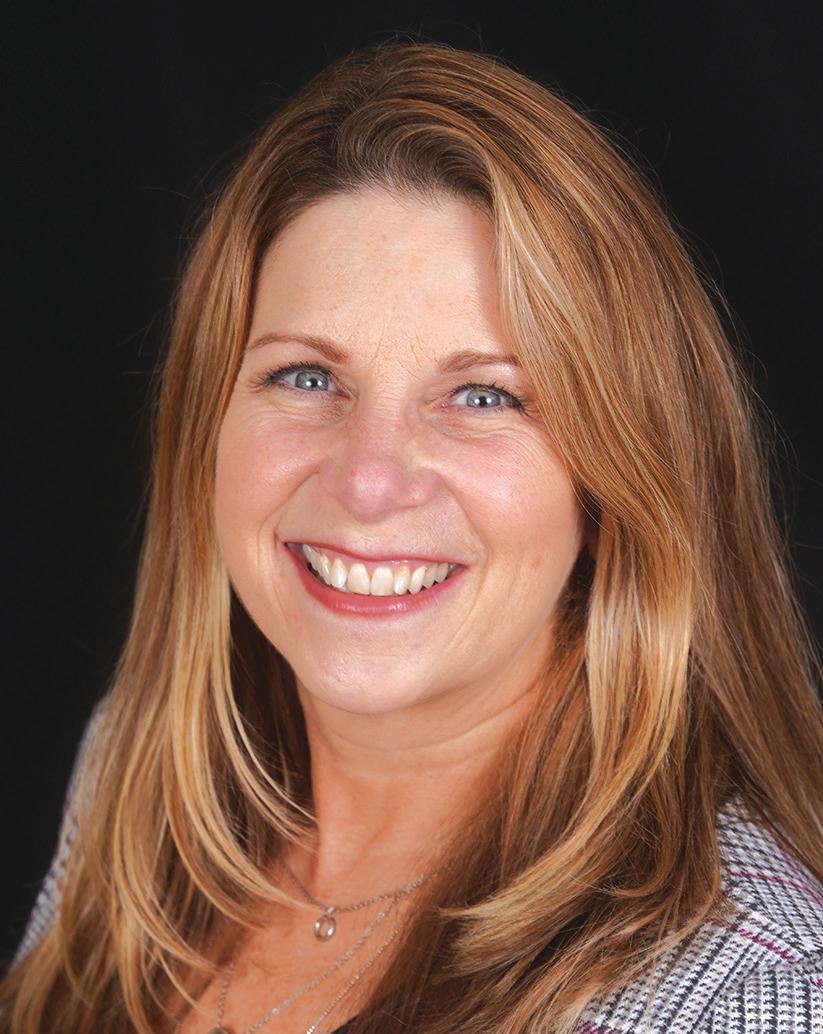
greenhouse gas reduction goals, which are crucial for both our customers and the planet. We now have alignment to these goals within the packaging platform per our commitment to the CDP. I see my role as an opportunity to make a significant impact on sustainability, far beyond what I could have achieved in my previous positions.
I also take enjoyment from the opportunity to collaborate with the diverse team at BW Packaging to develop a comprehensive sustainability strategy that invites everyone to get involved. The collaboration and buy-in I’ve had from our team is what enables us to ensure our equipment can reliably run sustainable materials. It requires a deep understanding of these materials and the willingness of our team members to take an active role in validating those materials through rigorous testing on our machines.
“ . . . by encouraging our customers to involve their OEMs early in the development process, we can establish a more productive, collaborative approach.”
Our efforts have also been acknowledged industry-wide, highlighted by our Synerlink team’s nomination for the Packaging Europe Sustainability Awards in 2022 for their SnapCut PET cutting technology and Synerlink’s subsequent victory in the Pre-Commercialize Recyclable Packaging category in 2023 for their contributions to a collaboration focusing on sustainable materials for dairy cups. Of course, our pursuit of sustainability is not driven by a desire for awards and recognition, but these accolades reflect our team’s hard work and dedication to advancing sustainable manufacturing and offering more responsible solutions to our customers.
OEM: What do you personally want to accomplish as Global Sustainable Packaging Leader?
Bryson: Personally, I have found the process of developing BW Packaging’s sustainability strategy from the ground up to be very fulfilling. A key focus for me has been establishing and achieving
OEM: What are some of the biggest challenges you have faced, making sustainability front of mind at a machinery builder?
Bryson: One of the main challenges has been helping various departments understand the connection between their work and sustainability, especially how climate change impacts us. To overcome this, I’ve focused on helping various departments, like sales and operations, understand and personally connect with sustainability. It’s about making sustainability relatable and engaging for them. The key is to bridge the gap between the world of sustainability, our customers’ goals, and our daily operations. It’s crucial to demonstrate that what matters to our customers also matters deeply to us at BW Packaging. I’m proud to say that we truly are living the words that we’ve included in BW Packaging’s sustainability commitment.
OEM: What are some of the low-hanging fruit other OEMs can check off the list in the drive towards becoming more sustainable?
“. . . the U.S. is not as quick as in Europe, but the trend is definitely moving towards more stringent sustainability legislation.”
Bryson: The idea of ‘lowhanging fruit’ in sustainability might be misleading as it suggests easy wins without a fundamental shift in approach. Sustainable practices require both top-down leadership and bottom-up engagement. For immediate action, OEMs can focus on testing sustainable materials, but in the long term, a comprehensive organizational commitment to sustainability, encompassing leadership, innovation, and compliance with legislation, is essential. Everyone can be a sustainability leader in their own sphere of influence. I’m very passionate about this! I encourage anyone struggling with the mindset shift that’s required to read my post about sustainable packaging and OEM engagement.
OEM: Finally, on a larger scale, when do you think the U.S. will catch up with Europe regarding EPR or taxes on carbon footprint? Is that something you see
happening in the near future? Why or why not?
The U.S. is gradually moving towards European standards in sustainability, especially in Extended Producer Responsibility (EPR) and carbon footprint taxes. This shift is evidenced by the increasing number of states introducing EPR legislation. While it can be challenging due to varying state laws, seeing a broader acceptance of the responsibility brands must take for their materials is encouraging. The pace of change in the U.S. is not as quick as in Europe, but the trend is definitely moving towards more stringent sustainability legislation. To keep atop of that effort, look up the SPC (Sustainable Packaging Coalition) website page tracking EPR status in the US. For more information, visit Extended Producer Responsibility - SPC’s Guide at sustainablepackaging.org. ■

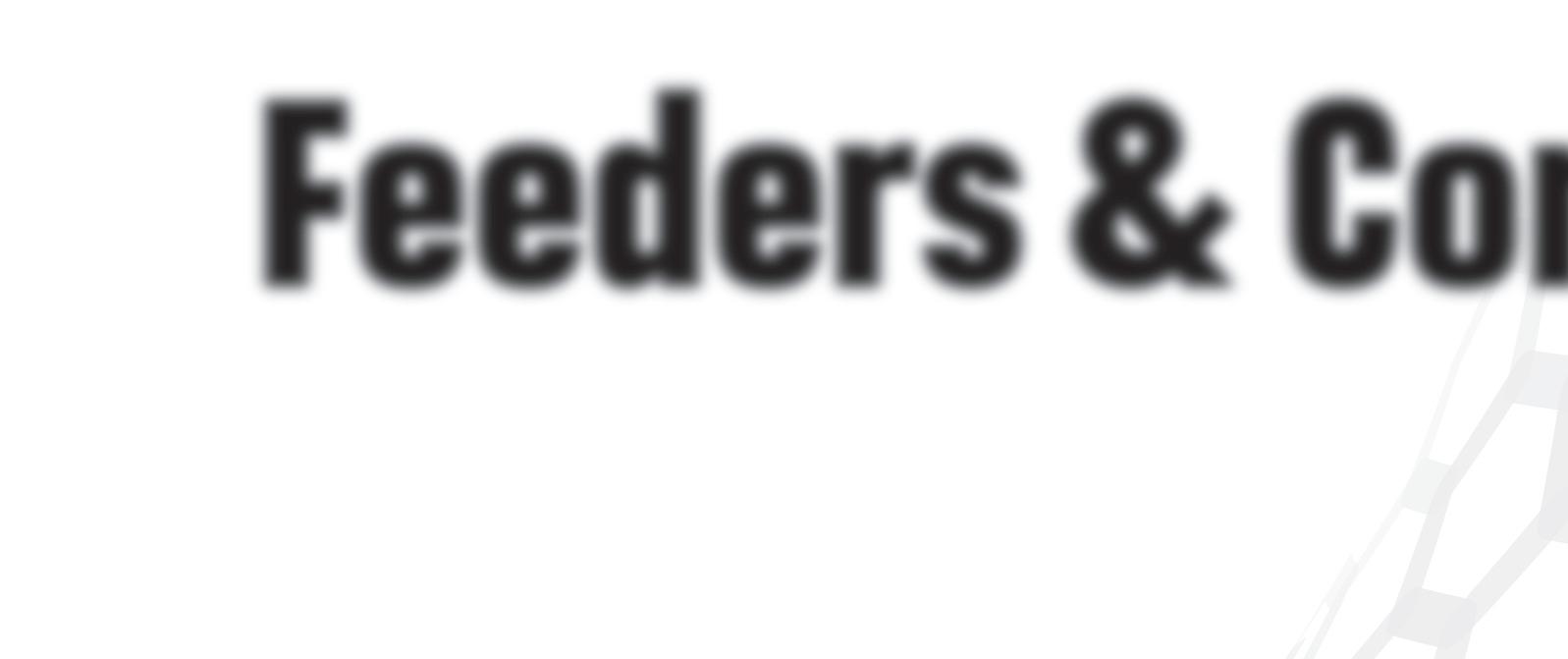




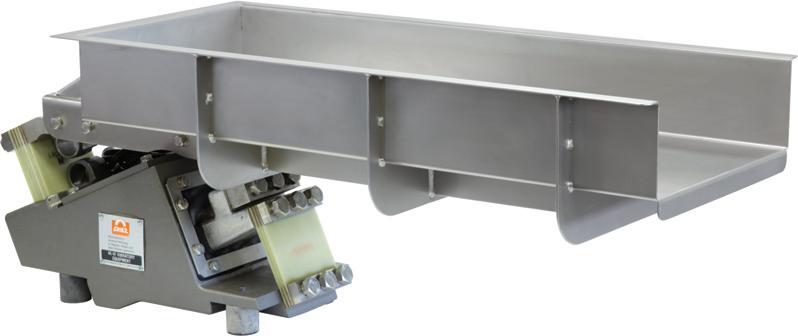

•Energy efficient electromagnetic drives
•High Speed models for rapid On/Off cycling
•High Deflection models for fine powders, leafy, and sticky products

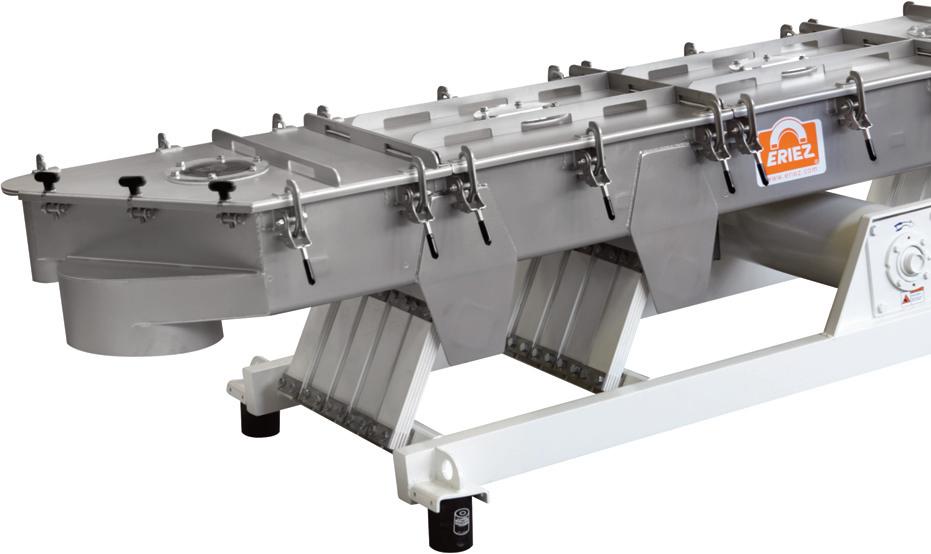
Mechanical & Electromagnetic


•Low profile models
•Wide range of screener options
•Models for every application

























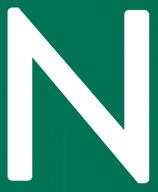

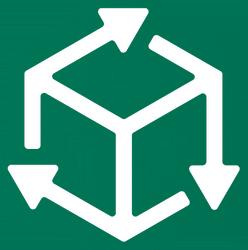



Today’s CPG companies are eager to find solution providers who can advance their success in the circular supply chain. Connect with these decision-makers and other packaging recycling stakeholders at the Packaging Recycling Summit 2024.
Keynote Speaker | Jim Velky, Sr. Director of Sustainability The Coca-Cola Company

Speaking and promotional branding opportunities for suppliers
Schedule pre-qualified 1-on-1 meetings with attendees
Attendees will hear from household names like Danone, General Mills, WM and more
Multiple networking opportunities throughout all three days
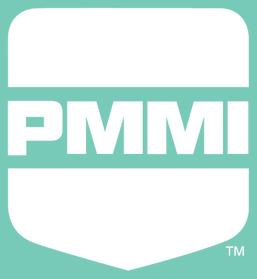
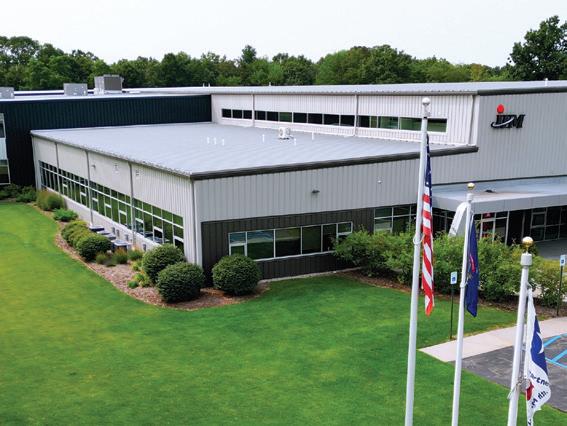
When established: 1998
Range of products: Design, engineering, integration, automation, control and installation of Secondary Packaging systems and subsystems.
Executive team: Erv Fringer, President; Dan Breuker, Director of Engineering, Integration and Project Management, Brad Breuker, Sales Manager; Scott Ash, Director of Onsite Services
Headquarters / manufacturing location(s): Two facilities in Rockford, Michigan
Number of employees: 141
Number of field service personnel: 36
Facility square footage: Two facilities totaling 178,000 SF
Geographic sales and support areas: North America
Company website: www.callipm.com
Annual revenues: over 50 million
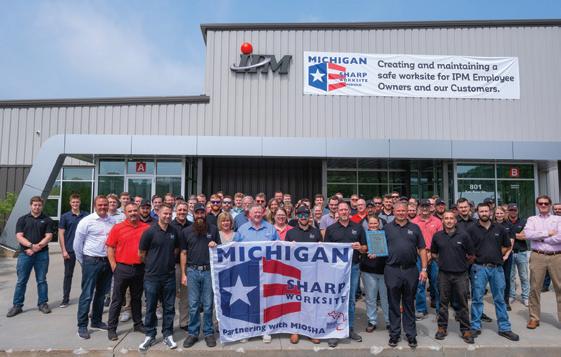
IPM’s emphasis on machine runnability and continued service is driven by its positioning statement that “uptime is the only time that matters.”
By Casey Flanagan, Digital Editor, PMMI Media GroupIf one word could describe the team at Integrated Packaging Machinery (IPM), it would be “dedicated.”
The Michigan-based dairy, food, and beverage packaging systems integrator tackles every project with a specialized and customerfocused approach, where uptime is king, and every decision is made with practical runnability in mind.
This holistic approach to meeting its customers’ targets “may seem far too aspirational,” explains Tom Wiersma, business development manager at IPM. “But the truth is, there are ways to do what needs to be done.”
IPM’s dedication to its customers’ needs stems from its employees’ own dedication to the company. Running under an employee stock ownership plan (ESOP), every IPM employee is committed to the company’s success.
“The culture is such that nobody ever says anything along the lines of ‘that’s not my job,’” Wiersma says. “Our employees will find a way to get it done or find somebody who can get it done, because when the company succeeds, they succeed.”
The story of IPM begins in 1998, with two colleagues who worked together at a conveyor supplier— Brad Lamb, IPM’s president until his retirement two months ago, and Kendall Malstrom, who still works at
IPM as vice president.
The duo decided they could excel at designing packaging systems and started the company with that goal in mind. Without the means to build their own machines, they decided to work with those who could.
“That’s been the model ever since. We’ll buy the best solution from outside, and integrate it into a single packaging ecosystem,” says Wiersma.
Part of what makes IPM unique is its OEM-neutral approach to designing secondary packaging lines. When choosing machines for a project, it prioritizes optimal performance over any specific OEM product line.
When designing a highly customized line to fit both the dimensions and performance metrics required by its customers, “not every OEM can do it, and not everyone has a good price,” Wiersma explains. “We have to find the OEM that solves all the right problems, and no single company does that.”
The company instead approaches each project with a fresh perspective, informing its decisions with an “uptime audit” in the early planning stages. This includes an on-site meeting to gather all the available data about the customers’ current and desired production rates, packaging dimensions, and other
necessary information.
“If it’s an existing system they want to modernize, we’ll assess that system and its uptime capabilities, asking ‘what do we need to do to make this work better?’” explains Wiersma. “When it’s a new project, we’ll spend time with our customers to figure out what they need, what their aspirations are for this plant, and we’ll help them unearth all that.”
This assessment and subsequent project phases are guided by IPM’s SURE-thing approach (Specified for Uptime + Runnability Engineered).
In the eyes of IPM, uptime is an essential consideration for the success of its customers, and it must be strategically achieved rather than being left to happenstance.
While in operation, “it’s okay if a line slows down, but then it has to be designed to auto-accumulate cartons, and speed up again when the time comes,” says Wiersma. “Runnability is key, and that’s also an engineered solution.”
With these principles in mind, IPM completes its design phase with an evaluation of several options to reach scope freeze, or a solidification of the project’s requirements.
As the process continues, scope freeze may be malleable, “but the point of the first phases is to do all that we can to ensure that scope freeze doesn’t move,” Wiersma says.
Once IPM starts connecting machinery, it follows a rigorous factory acceptance test (FAT) protocol, closely adhering to PMMIsuggested standards, to ensure the various machinery operates as intended.
IPM can take two different routes for its FAT, depending on the project.
In more straightforward cases, the company can confidently go to an OEM site with the customer’s
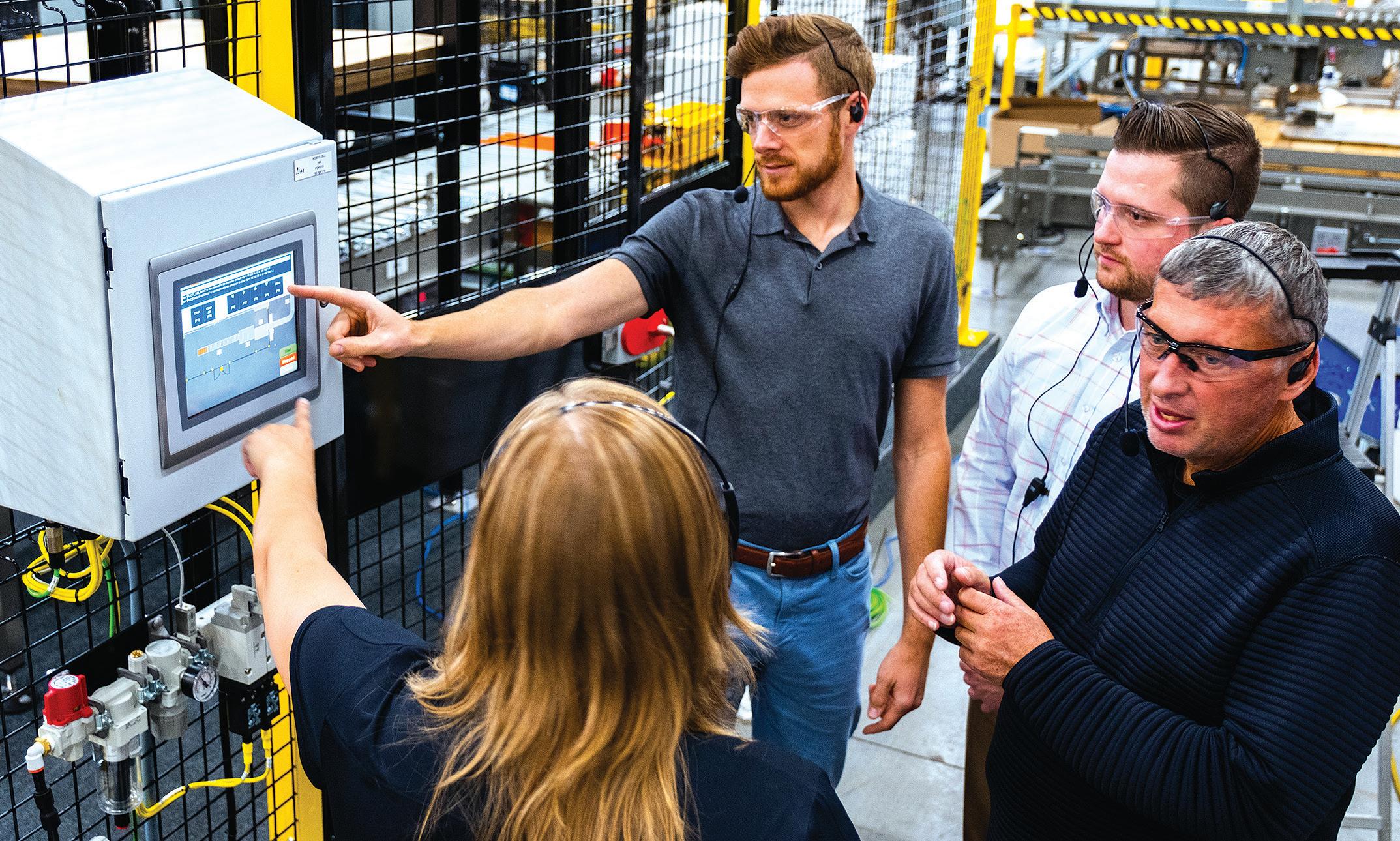
machine requirements in mind, observe the machine in action, and give it the stamp of approval.
For more complex projects, though, like a recent case Wiersma cited where three robots would be working together, IPM may need to take matters into its own hands.
“There’s no way we could have done that at three different OEM locations, so we had to bring the robots into our own plant, set it up, and make sure it is programmed accurately and works as intended,” Wiersma says. “It’s expensive, so we don’t want to do it if we don’t have to, but sometimes you have to. Our customers know that, and it’s baked into the price.”
IPM then puts the whole system together at the customer’s plant and runs a demanding site acceptance test (SAT).
“We’ve installed and commissioned it, programmed it, automated it, but we don’t leave until it’s operating precisely as the customer wanted,” Wiersma says.
As a packaging systems integrator, IPM generally leaves the machine building to the OEMs. But with its “bias for over-delivering,” as Wiersma says, the company will design machine components when the situation necessitates.
One such example came with IPM’s development of its AccuTURRET end-of-arm-tool (EOAT) cable management system.
Customers had reported to IPM that the cables running into the EOAT were wearing down from repeated use, and eventually causing downtime.
IPM developed the cable management system to solve this problem, with an emphasis on difficult pallet building operations and space-limited applications. The system features 220° rotation to accelerate cycle functions, improve accuracy, and reduce stress on the energy, communications, and vacuum supply of the EOAT.
“Although we don’t manufacture machinery as a rule, if we can’t find it, we’ll find a way,” says Wiersma.
Also unique to IPM is its approach toward training; the company’s focus on the entire packaging line as a cohesive system extends into its training philosophy.
With anywhere between six to 10 different machine centers or functions on a given packaging line, it’s easy to develop gaps in expertise by studying each machine as an individual unit.
Instead of an OEM technician coming to train employees on individual machines, “we work very closely with those OEMs, take their information, and design a curriculum for the entire packaging line,” Wiersma says.
IPM trains its educators on-site at customer facilities.

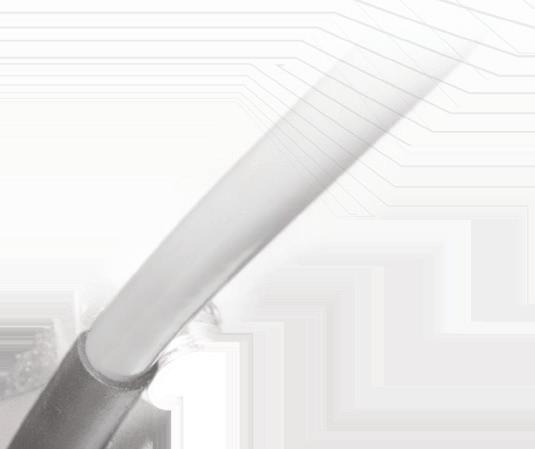





The AccuTURRET system improves EOAT efficiency while protecting the machine’s wiring.
IPM’s staff includes four “adult educators” to gather this information and craft a comprehensive curriculum, says Wiersma. When the company installs a new line at a customer site, these educators will visit the plant and offer training across all shifts, sometimes staying for two days to cover all employees.




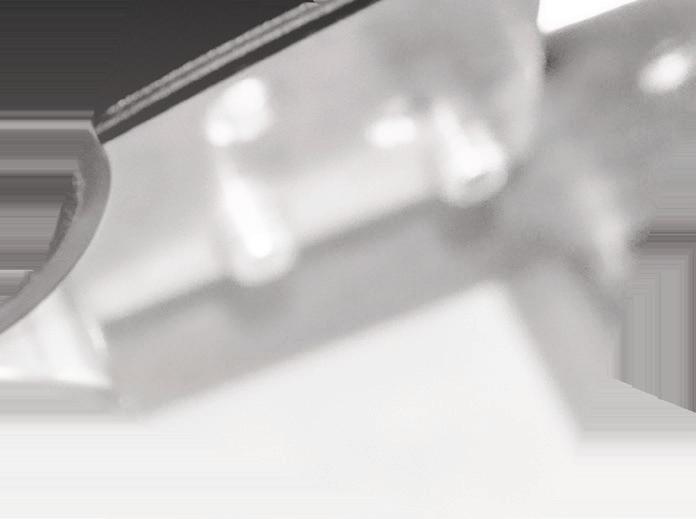



Further, the educators compile the information into an e-learning tool for future reference.
“After we leave, people need to be reminded or re-educated, or people leave and more come in. So, we convert that line curriculum into an e-learning tool that people can spend time on and learn from,” Wiersma says.




Looking forward, IPM is placing an emphasis on emerging digital technology in the name of continued customer support.
The company already employs 36 field technicians to install, optimize, and maintain the systems at its customers’ sites, but its development focus now includes technology to streamline and digitize maintenance.
Currently in development is digital twin capability, or a real-time, exact digital replica of a customer’s packaging line. Once operational, IPM will be able to troubleshoot issues for customers without requiring an on-site technician.
“We will be able to help customers via remote access, to troubleshoot issues or even augment our earlier training by having an instructor use that digital twin with new employees,” says Wiersma.
IPM is also in the process of implementing artificial intelligence (AI) for use in predictive maintenance.
“If we can predict some of those issues with AI, we can do predictive maintenance more intelligently, more timely, more relevant, and less expensively,” says Wiersma.
Additionally, IPM has already had some success in implementing AI for training.
“The cohort of five or six employees at a customer location will have their AI device on, and we can do training on-site, in the plants, using AI as a medium,” says Wiersma. ■

Are you looking to engage your customers with insight-driven strategies? Discover the power of actionable intelligence with PMMI’s member-exclusive resources.
Our Business Intelligence, Custom Research, Global Marketing, and specialized Workforce Development programs, including Packaging & Processing Selling in Today’s Market and Field Service Essentials, are designed to not only navigate industry challenges but also to uncover deep insights that empower you to guide your customers with confidence and precision and meet their evolving needs.
PMMI is your answer, connecting you to customers and providing the support and resources you need 365 days a year.
Learn more at pmmi.org/pmmi365
When established: 1993
Range of products: 35+
Executive team: David Ramnarain (President), Chris Ramnarain (V. Presidrent), Brian Ramnarain (CEO)
Production/shipping volume per year: 100+
Headquarters / manufacturing location(s): Shakopee, MN
Number of employees: 10+
Number of field service personnel: N/A
Facility square footage: 30,000 sq
Geographic sales and support areas: USA
Company website: www.psrautomation.com
Annual revenuesPick a range: $3-6 million



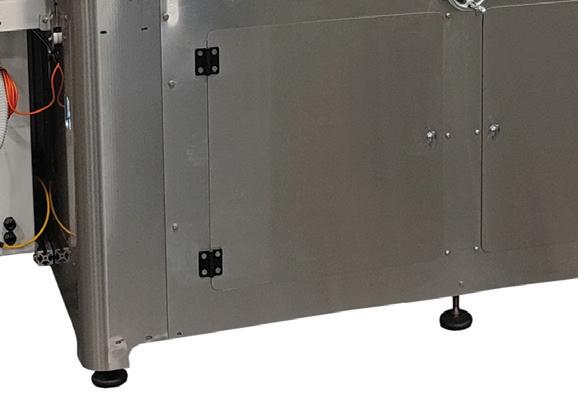
PSR Automation is a family packaging company that expanded along with the family.
By Casey Flanagan, Digital Editor, PMMI Media GroupOne of PMMI’s newer members, PSR Automation, is a unique story about a family in Shakopee, Minnesota, that literally goes down the packaging line and learns how to manufacture the different pieces of equipment it produces. OEM spoke with patriarch David Ramnarain about PSR’s evolution. The full interview is available at oemmagazine.com. The following are some highlights.
OEM: Can you provide a brief history of your company?
PSR: I came from Guyana, South America, with a mechanical engineering degree, and I started working at a contract packaging company in Minneapolis. I worked for that company for 20 years, when I decided I could make a difference in the industry by developing brandnew technologies.

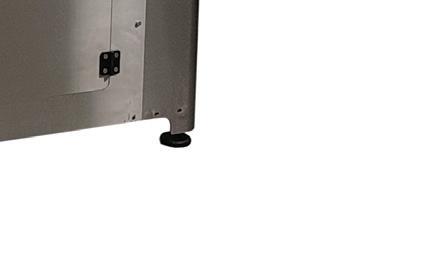
In 1993, PSR Automation Inc. started in a two-car garage and is now operating out of a 30,000 sq ft building. PSR Automation Inc. is now a thriving engineering and automation enterprise.
In addition to providing engineering solutions and quality packaging machines for 30 years, PSR believes in supporting local
businesses and contributes to improving customers growth. PSR stands as an example of hard work, perseverance, and the American dream
OEM: What sets your company apart in the industry—what makes it shine?
We take one part at a time. We did the filling part, and we got very good at that for the past 15 years, and we offer top-of-the-line servo fillers. We did capping, and we have the top-of-the-line there. Now we’re doing the pump inserters, with finger pumps and trigger pumps.
The next approach will be going to the end of the line, where robotics is a big aspect. We’ll have to develop a strategy to change how packaging is done at the end of the line. We’ll go about it more efficiently to accommodate the space available for packaging companies. That sets us apart in engineering and technology; we try to change the industry.
We can also make changes very fast; we’re not top-heavy. Developing a new machine only takes about two or three months from the initial idea to when the machine is shipped. Machine lead time is about eight to 12 weeks, which is very good for the industry.
OEM: What made the decision to join PMMI come about?
PSR: PSR has grown to a point where we have all these products, but there’s no way that companies around the country know about us. We know PMMI is in the business of marketing for packaging companies. Without being part of a big membership, you can isolate yourself. For our company right now, we don’t want to do that, we want to be involved with everything happening.
OEM: Have you participated in any PMMI programs since becoming a member or have plans to in the future?
PSR: We’re looking forward to attending more PMMI trade shows. Marketing will also be a big deal for us because we don’t have anybody in-house to do that for us. I think it’s time for a professional marketing plan, and that’s where PMMI comes in with insights from years of marketing experience.
OEM: What’s your approach to new product development? How do you come up with ideas for new machines and markettest them?
PSR: We have about 77 different products that go on the packaging line, but we don’t manufacture all of them; we just manufacture seven products in our facility right now. Those are manufactured constantly, so they’re on the floor ready to go. Innovation-wise, if a customer requests a custom solution for the packaging line, we’ll analyze whether that would be something we would want to invest engineering and resources and, in turn, be able to market that. If the customer comes to us and we see a future use for that product, then we’ll
The PI5000 Pump/ Trigger Inserter is controlled by nine servo motors for maximum flexibility.

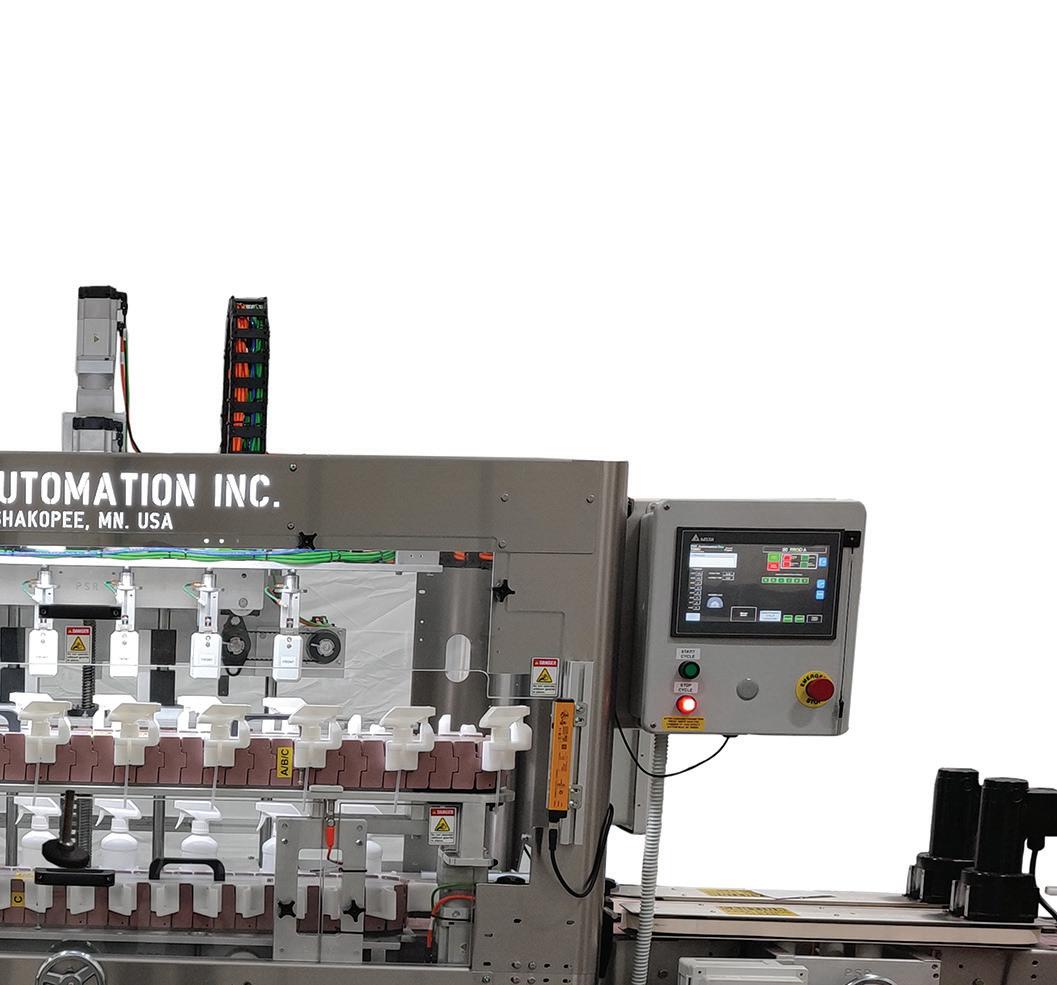
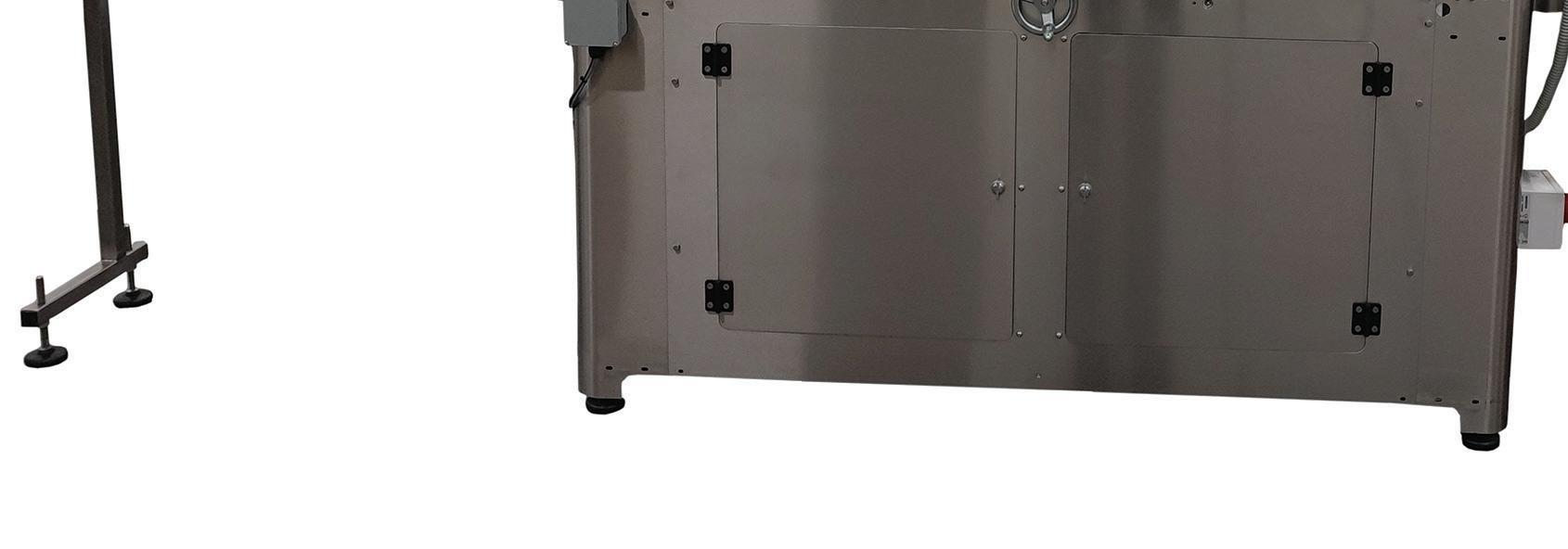
get into that area. That’s how we develop a brand-new system.
On a day-to-day basis, we look at the whole packaging line and see what the industry is doing, and we’ll allocate resources from there. PSR has captured most of the packaging line, so we can complete the whole filling line, almost the whole packaging line, from start to finish. We don’t currently make a bottle scrambler, which we can do, but somebody else is doing a good job at it, so we don’t want to just copy that. We want to come up with brand-new ideas.
OEM: How has your product line broadened over the years?
PSR: Back in 1993, I started out making change parts and doing machining jobs. I had a lathe and a mill in the garage to fill those customer orders. Then, finally, I decided to do a filling line due to a customer request.
The first filling machine was the pressure filler. Since everybody was making pressure fillers, I tried to be competitive and create one. After 30 years, we still have pressure fillers running in factories, so the quality is built in. We did that for about seven or eight years, sustaining the business. But then my oldest son came in as an electrical engineer, while PLCs and other tech came in. That

made a big difference in our company; he came and revolutionized the whole electrical system, replacing mechanical movements with servos. That came about in about 2005.
Two years later, my youngest son came in with a mechanical engineering degree, and he took everything from hand-drawing machines to using technology. The two came at the right time, and the company took off from then on.
OEM: Do you have any plans for facility expansion or new operations?
PSR: In the past year, we have completed three brandnew projects. Those need to be manufactured and brought to the market. Right now, we have new carbonation machinery. Because it’s brand-new, we are applying for patents. I know for sure that it’s going to take off.
Then we want to manufacture other product lines, too, but the way the factory is set up right now—we have seven different product lines—it’s already filled up. Expansion is coming very soon. PSR’s track record is that we go to a new facility every 10 years. I’m looking into a new facility already, and it’s only been five years. We’re outgrowing this building already. ■

Reflecting on our previous exploration of AI’s historical progression within the OEM manufacturing sector (OEM Spring 2024), we now venture into the burgeoning field of Generative AI. This article delves into its speculative yet promising impact on product design and innovation within the OEM industry, envisioning future possibilities.
Generative AI, distinguished by its capability to create and innovate, involves sophisticated algorithms that learn from extensive datasets to generate new concepts. This form of AI stands to revolutionize the approach to product design by not just analyzing data but actively generating innovative solutions.
Generative AI redefines OEM product design by automating processes and fostering creativity. This technology autonomously generates and iterates on designs, fostering innovative industrial design methods. For example, in automotive sectors, it devises solutions that synergize aerodynamics with aesthetics, areas traditionally dominated by manual effort. Additionally, it produces multiple design alternatives quickly, expanding the creative scope for designers.
This AI technology also works in conjunction with simulation tools, allowing for the rapid testing of designs under simulated conditions. This capability not only speeds up the design process but also improves its accuracy and reliability. It plays a critical role in industries requiring quick innovation cycles such as electronics, streamlining prototyping and refinement processes.
Generative AI promises to revolutionize how OEMs craft products by enhancing customization and personalization. At present, its application in production is exploratory, but it aims to tailor products to individual preferences efficiently, surpassing traditional methods. It leverages deep learning to analyze various

“ . . . it is poised to become a cornerstone technology in OEM design processes.”
data points, including consumer purchases and social media trends, to create designs that resonate with current and future market demands.
Moreover, Generative AI’s capabilities extend to crafting products uniquely designed for individual users, exemplified by personalized vehicle designs in the automotive industry. It supports a dynamic design process, continuously refining products based on user feedback and performance data. Virtual prototyping, enabled by AI, streamlines design validation by minimizing the need for physical prototypes, reducing costs and environmental impact. This approach also emphasizes sustainable design practices, ensuring that personalized products are as eco-friendly as they are innovative.
Generative AI’s ability to process and analyze vast amounts of data can lead to innovative solutions for complex design challenges that would



typically require extensive R&D resources. It can identify non-intuitive design options that improve performance and durability by analyzing factors such as material properties, environmental impacts, and usage patterns simultaneously. In aerospace, for instance, this might involve developing more efficient wing designs that optimize aerodynamics and reduce fuel consumption without compromising on safety or cost.
The potential applications of Generative AI in OEM product design span across industries. In the electronics sector, for example, Generative AI could be used to design circuit layouts that optimize space and power consumption while enhancing capabilities. In furniture manufacturing, AI could generate designs that optimize material use and comfort, catering to ergonomic standards and consumer preferences, potentially reducing costs and environmental impact.
As Generative AI continues to evolve, it is poised to become a cornerstone technology in OEM design processes. However, harnessing its full potential will require overcoming significant challenges, including ethical concerns related to automated decision-making and the need for robust data privacy protections. Future advancements in AI will need to address these issues head-on, ensuring that AI-driven designs are not only innovative but also aligned with broader societal values and regulatory standards.
Generative AI represents a frontier in OEM product design and innovation. With its ability to enhance creativity, drive efficiency, and enable unprecedented levels of customization, it holds the promise of profoundly transforming the industry. As we look ahead, it is clear that integrating Generative AI into OEM design processes will not only redefine product innovation but also set new benchmarks for the future of manufacturing. ■
David McGraw is a Senior Director at Alvarez & Marsal Private Equity Performance Group L.L.C.







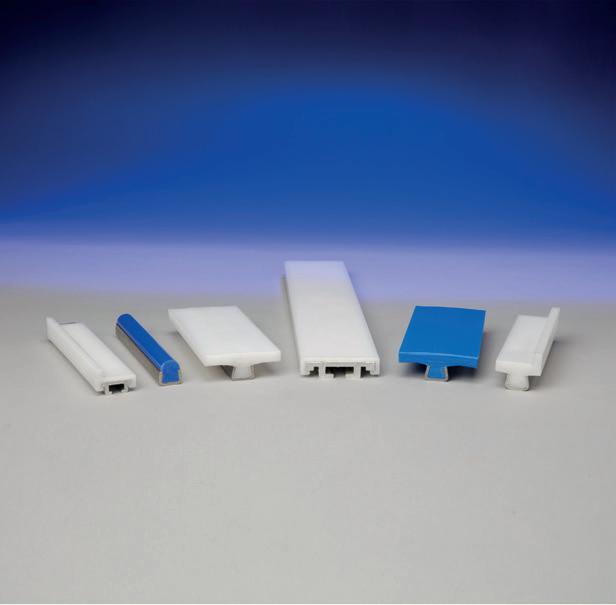
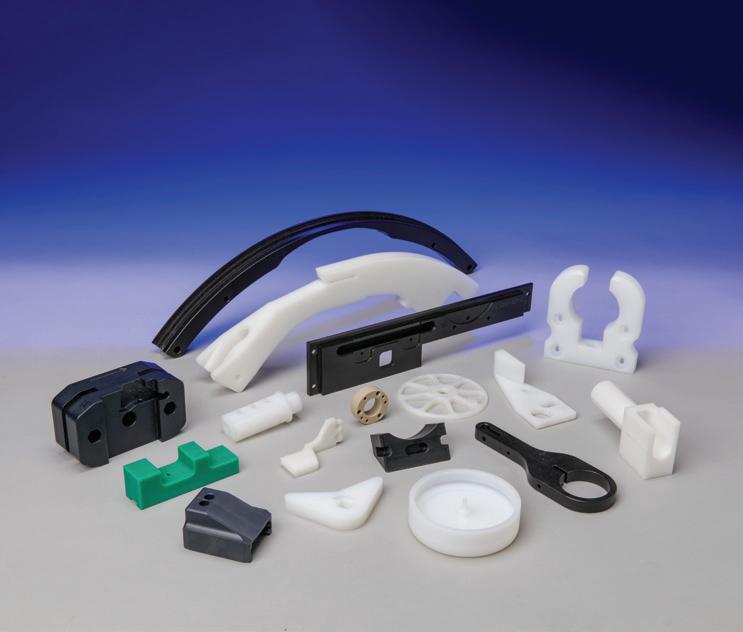


THIS COLLABORATION offers PMMI members exclusive benefits aimed at strengthening their workforce. PMMI members can attend exclusive recruitment events, including virtual and in-person career fairs, workshops, and Heroes Connect events. These events provide opportunities for PMMI companies to interact with veterans in training programs and discuss the industry, their companies, and potential career paths.
This initiative gives PMMI member companies a strategic advantage in workforce development, which can enhance productivity and competitive edge in the global market. For more information on how to engage with this initiative, visit pmmi.org/ heroesmakeamerica.
July 24 – 25
(AC Hotel Vancouver Waterfront, Vancouver)
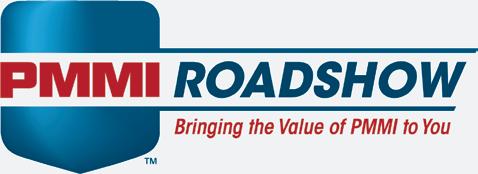
This free event promises to be a game-changer –offering an exciting agenda, including speakers from Bob’s Red Mill Natural Foods and a Plant Tour of their processing and packaging facility. Hear from Industry experts and expand your network. Whether you’re interested in the latest industry trends, best practices, or sales strategies, there’s something for everyone.
For more details and to register, visit pmmi.org/roadshow.
SheLeads: Navigation Leadership for Women (New!)
July 10–11 (PMMI, Herndon, Virginia)
October 8–9 (PMMI, Chicago)

This course is designed specifically for women leaders in manufacturing who are looking to enhance their self-awareness and leadership skills. This interactive program provides a platform for participants to explore new ideas, reflect, share experiences, practice new skills, and build new relationships with other leaders to support their growth.
Registration details are coming soon! For more information, visit pmmi.org/sheleads.
July 30 – 31, (PMMI, Chicago)
August 28 – 29, (PMMI, Chicago)
December 11–12 (PMMI, Las Vegas)
This two-day workshop is specifically designed for packaging and processing equipment sales professionals who are looking to maximize sales at PACK EXPO through pre-show preparation, effective selling strategies during the event, and post-show follow-up techniques.
August 20–21 (Delkor Systems, Minneapolis)
November 3–4 (PACK EXPO International, Chicago)
Field service technicians are the face of your organization. They spend more time with your customers than anyone from your operation. This two-day workshop explores the non-technical knowledge and skills needed to be a great technician.
Certified Trainer
August 22–23
(Delkor Systems, Minneapolis)
November 3–4
(PACK EXPO International, Chicago)

This workshop gives your company the strategies and tactics to become an effective and successful trainer across all employee skill levels.
Packaging & Processing Equipment Selling in Today’s Market
September 26–27
PMMI Annual Meeting and Young Professionals Conference
The 2024 Young Professionals Conference (YPC) will be held on the last day of the PMMI Annual Meeting. The YPC is an opportunity for emerging leaders in packaging and processing to get expert career advice, explore industry hot topics, and network with peers.
(PMMI Annual Meeting, Hershey, Pennsylvania)
This workshop will help capital equipment sales professionals and their managers learn systematic consultative selling techniques to make them trusted advisors to customers purchasing packaging, processing, and automation equipment.
Risk Assessment
November 3–4
(PACK EXPO International, Chicago)
Risk assessment is a process that manufacturers use to evaluate their equipment before an accident or incident occurs. Many end users now require risk assessment as part of the procurement process. This workshop provides valuable insights and strategies for maximizing safety and minimizing liability in machinery-related accidents.
Learn more and register for these workshops today at pmmiu.org
On the Rise Awards - Nominations Due July 15
NOMINATE outstanding young professionals for PMMI’s On the Rise Awards. This program, hosted by the Young Professionals Network, supports career growth in packaging and processing. Nominations open May 1 - July 15.
Visit pmmi.org/youngprofessionals/awards to nominate your young professional.
September 25, 1:00 PM - 5:00 PM Hershey Lodge Hershey, Pennsylvania
Visit pmmi.org/young-professionals/events to register.
Young Professionals Networking Reception at PACK EXPO International
(November 3 - 6, McCormick Place, Chicago) November 4, 2024


Details forthcoming at pmmi.org/young-professionals/events.
PMMI’S Expert Connect program provides the hard-to-get business support you need in two key areas: legal counsel and exporting advice.
Need advice regarding contracts, labor law, or regulatory issues? PMMI has the answer. We can connect you with legal expert Eric Greenberg, from Croke Fairchild Duarte & Beres, LLC. Eric has extensive experience in our industry and can provide significant value to PMMI members. PMMI will cover the first hour of Eric’s time. If your question requires additional time, you can engage Eric’s firm at their cost.
Services include:
• General Corporate Advice
• Finance & Liquidity Solutions
• Venture Capital & Founders
• Employment & Labor
• Litigation & Investigations
• Mergers & Acquisitions
• Outside General Counsel
• Food and Drug Law
• Government Affairs & Regulatory Law
• Taxation
• Securities Regulation
• Corporate Governance
• Private Funds & Investment Management
• Restructuring & Special Situations
• Intellectual Property and Technology
• Real Estate & Zoning
• Family Office
• Currency, Digital Assets & Web3
• Private Client Services
PMMI provides answers to your most challenging export questions. We have experienced consultants and PMMI exporters available to offer counseling and advice to PMMI members who are either new at exporting or need advice on specific issues or markets. Some of our professional experts charge for services. PMMI will cover the cost of a limited number of hours for these experts. If your question requires additional time, you can engage that professional at their cost.
Services Include:
• Identifying and working with international agents.
• Pricing products for international markets.
• Tariff Intelligence — Duties, taxes, and trade regulatory system specialist.
• Operations/Cost of doing business overseas.
• Internal Staff to support exports.
• International Standards/ CE compliance.
• Trade Finance.
• Shipping.
To take advantage of this service, email Andrea Admana, market development specialist
Email: aadmana@pmmi.org
Learn more at pmmi.org/global-marketing/ expertconnect
DISCOVER the untapped potential of the Mexican packaging machinery market. Gain a comprehensive understanding of this thriving industry as our experts delve into the findings of PMMI’s latest Mexico report. This webinar replay will help you dive deeper into the market opportunities and get a complete vision of its potential.
Access the webinar replay at: pmmi.org/global-marketing/webinars

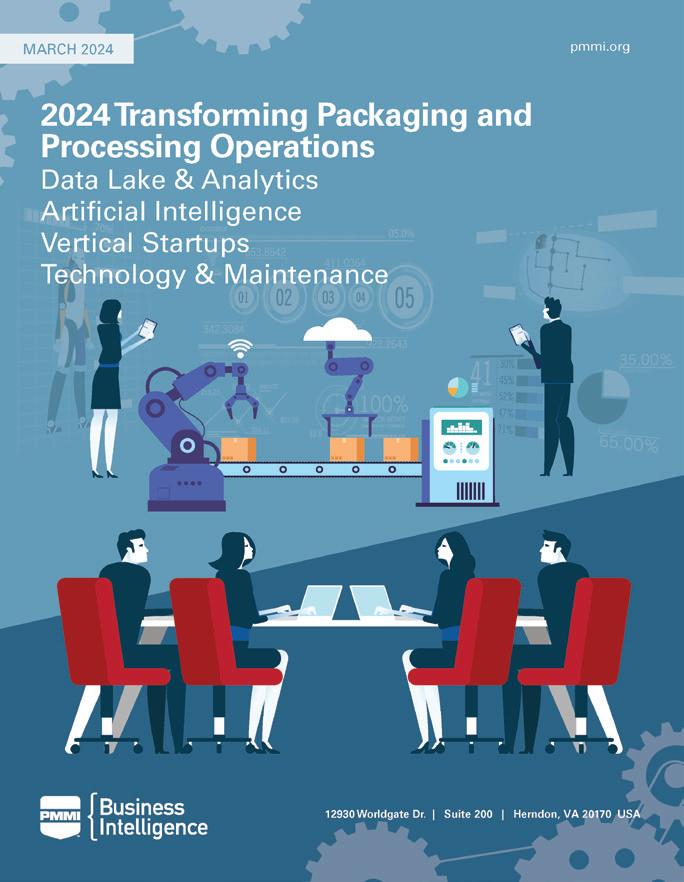
IT IS CLEAR that data and technology are playing an increasingly important role across the industry, and artificial intelligence (AI) will also play a growing role within packaging and processing. There are varying degrees of engagement with new technologies, with many participants expressing a desire to explore these further, utilizing them to enhance their business operations and address the skills gaps that continue to hamper the industry.
The 2024 Top to Top Summit, convened by PMMI, The Association for Packaging and Processing Technologies, brought together top-level executives from the packaging and processing industry to address critical issues and foster collaborative solutions. The summit focused on key topics such as data management, artificial intelligence (AI), vertical startups, and the strategic integration of technology to bridge workforce gaps.
Key findings from the summit outlined in the Transforming Packaging and Processing Operations report include:

1. Data Management and Analytics: Participants recognized the importance of “data lakes” for consolidating and leveraging operational data. There was a significant emphasis on the need for better data governance and the use of advanced analytics to enhance productivity and decisionmaking.
2. AI: AI was highlighted as crucial for improving operational efficiency and reliability. Discussions covered its role in integrating disparate systems and enhancing predictive maintenance capabilities. However, the adoption of AI remains gradual, with many companies still exploring its potential.
3. Vertical Startups: The discussions on vertical startups emphasized the importance of collaboration and communication from early project stages to ensure smooth full-scale operations post-setup. Successful vertical startups were seen to cut costs and enhance operational readiness swiftly and significantly.
4. Technology and Workforce: A central theme was the strategic use of technology to address the persistent skills gap in the workforce. Integrating AI augmented reality (AR), and virtual reality (VR) into training programs is helping companies develop a more skilled workforce more efficiently.
The summit addressed these areas and set the stage for ongoing discussions through PMMI’s Vision 2030 and the OpX Leadership Network, aiming to standardize practices and enhance technological adoption across the industry. The consensus was clear that leveraging technology and fostering industry-wide collaboration is essential for addressing current challenges and driving future success in the packaging and processing sectors.
MANY consumer-packaged goods companies’ (CPGs) warehouses are still highly manual and often operate from outdated buildings with unsuitable layouts, causing bottlenecks in their operations. Warehouse automation offers CPGs and third-party logistics companies (3PLs) various opportunities and benefits.
The report, Packaging and Automation in the Warehouses of the Future, published by PMMI, The Association for Packaging and Processing Technologies, highlights critical trends and investments within consumer-packaged goods (CPG) companies related to warehouse automation. Key insights from the report reveal that direct-to-consumer (D2C) growth and labor shortages are significant drivers of increased automation investments. Many CPGs are transitioning towards more automated systems to address efficiency challenges caused by these shortages and to manage the complexities introduced by e-commerce and D2C operations.


The document discusses various automation technologies being adopted, such as palletizers and mobile robots, which are becoming increasingly popular due to their potential to alleviate labor demands and enhance operational efficiency. Despite these advancements, many warehouses remain predominantly manual, presenting ongoing opportunities for greater automation implementation.
Additionally, the report touches on the challenges and strategies relevant to integrating these technologies, including space constraints, return on investment considerations, and the skills gap in the workforce. It emphasizes the importance of strategic investment in automation to future-proof operations and improve competitiveness in rapidly changing market conditions.
To download the report visit pmmi.org/report/2024transforming-packaging-and-processingoperations
To download the report visit pmmi.org/report/2023packaging-and-automation-warehouses-future
PACK EXPO EAST broke attendance records, attracting nearly 8,000 industry professionals to the Pennsylvania Convention Center in Philadelphia. Jim Pittas, PMMI’s President and CEO, highlighted the event’s significance as a crucial gathering for packaging and processing experts, featuring over 500 exhibitors spanning sectors like food, pharma, and personal care. Attendees also benefited from engaging sessions at the Innovation Stage and Industry Speaks, along with networking events like the Taste of Philly reception, emphasizing the importance of connections and industry insights. Read more about the show’s impact here. Looking forward, excitement mounts for PACK EXPO International 2024 in Chicago this November 3-6. Set to be the largest event in packaging and processing this year, it will host thousands of exhibitors and attendees worldwide. With 2,500 exhibitors covering industries and 40+ vertical markets, it promises to address manufacturing challenges head-on. Join the global gathering of over 45,000 attendees from consumer-packaged goods and life sciences companies to explore cutting-edge solutions, forge connections, and gain invaluable insights. Secure your spot today at packexpointernational.com.
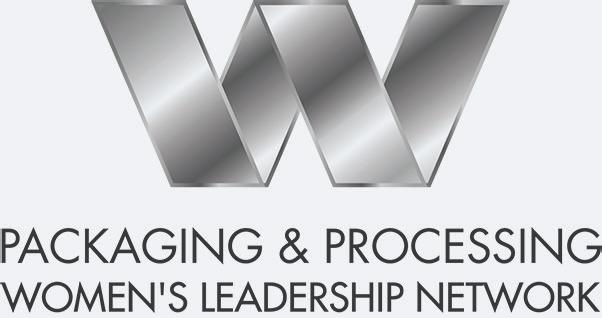
THE PPWLN (Packaging & Processing Women’s Leadership Network) is excited to release the PPWLN Learning Circle: Communications replay. Enjoy an engaging discussion featuring expert insights to help you master the complexities of communication in today’s age. Don’t miss the chance to enhance your communication skills — download the webinar replay today by visiting pmmi.org/ppwln.
OpX Leadership Network:
Key essential work products, created by the OpX Leadership Network, provide essential guidance on Total Cost of Ownership, Fac-
tory and Site Acceptance Tests, Overall Equipment Effectiveness, and Workforce Development. The network also emphasizes true collaboration between consumer packaged goods companies and OEMs, fostering partnerships that enhance innovation and efficiency in manufacturing processes. These initiatives help companies improve cost efficiency, ensure equipment reliability, optimize operational effectiveness, and enhance employee skills, contributing to operations’ overall productivity and sustainability.
For more information visit opxleadershipnetwork.org
MaX Member Forum:
The MaX Member Forum delivers guidance to the industry with work products on topics such as remote access, bridging the IT-OT cybersecurity gap, outlining pandemic policies for field service personnel, and providing a roadmap for effective service visits. It also promotes strong member-to-member collaboration, which facilitates the sharing of best practices and solutions across the network. These resources help businesses maintain high operational standards and adapt to evolving technological and health-related challenges.
These programs demonstrate PMMI’s commitment to fostering innovation and operational excellence within the packaging and processing industries. For more detailed insights, visit the PMMI website.
For more information visit pmmimaxmemberforum.org
WANT to keep the momentum going from PMMI’s Executive Leadership Conference and hear more from great speakers like Jamie Notter, Co-Founder, PROPEL or Mark King, Former CEO of Taco Bell? Check out unPACKed with PMMI on Apple Podcasts, Spotify, or wherever you get your pods and catch exclusive interviews with all your favorite speakers of the ELC – search for “unPACKed with PMMI” and start listening today! ■




Don’t miss these upcoming training and development opportunities!
Enhance your leadership skills to be recognized as an influential leader in the packaging and processing industry through interactive learning, self-awareness tools, and networking strategies.
JULY 10-11, 2024
PMMI; Herndon, VA
OCTOBER 8-9, 2024
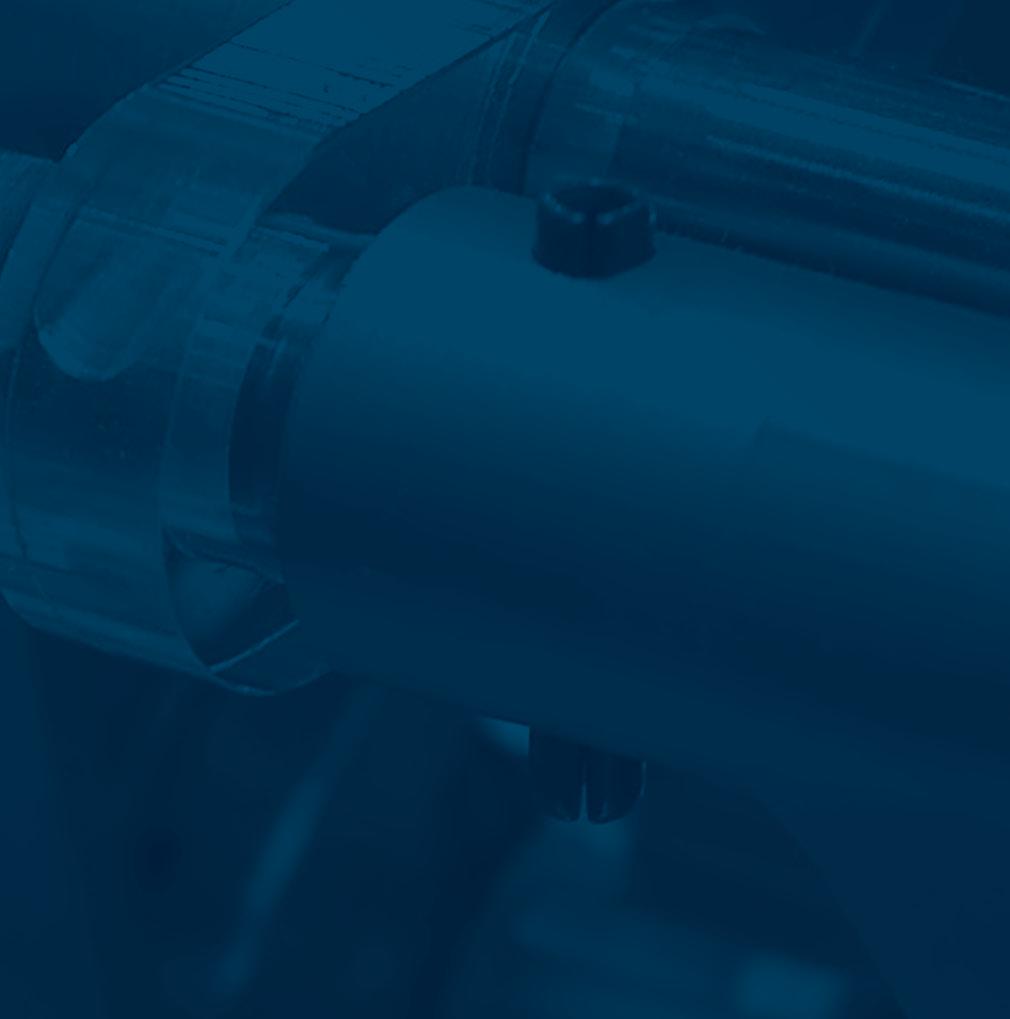

PMMI Media Group; Chicago, IL
Technicians are the face of your organization. Learn the customer service skills to become a trusted advisor to customers.
AUGUST 20-21, 2024

Maximize sales at PACK EXPO through preshow preparation, effective selling strategies, and post-show follow-up techniques.
JULY 30-31, 2024
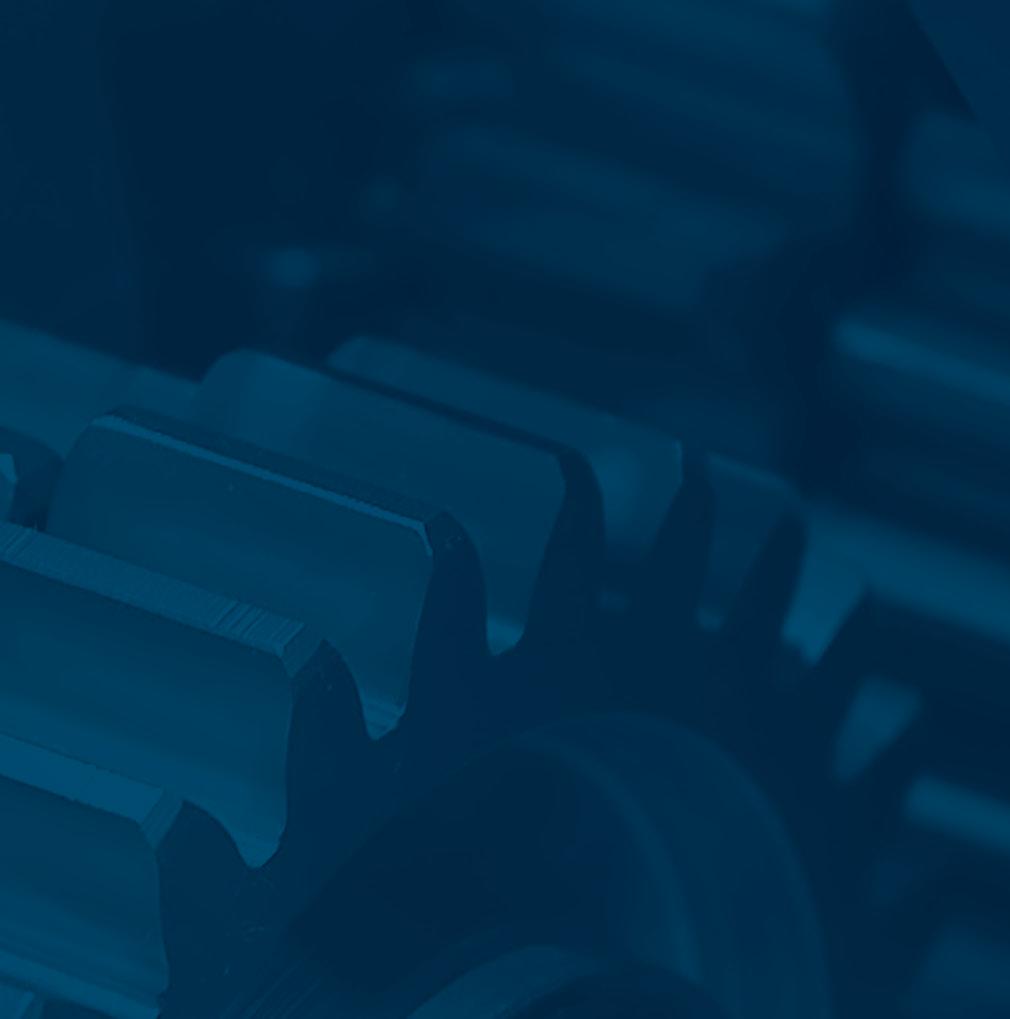
Delkor Systems; Minneapolis, MN
PMMI Media Group; Chicago, IL
AUGUST 28-29, 2024
PMMI Media Group; Chicago, IL
Learn the most effective strategies and techniques for delivering exceptional training across all employee skill levels with this industry-specific train-the-trainer program.
AUGUST 22-23, 2024
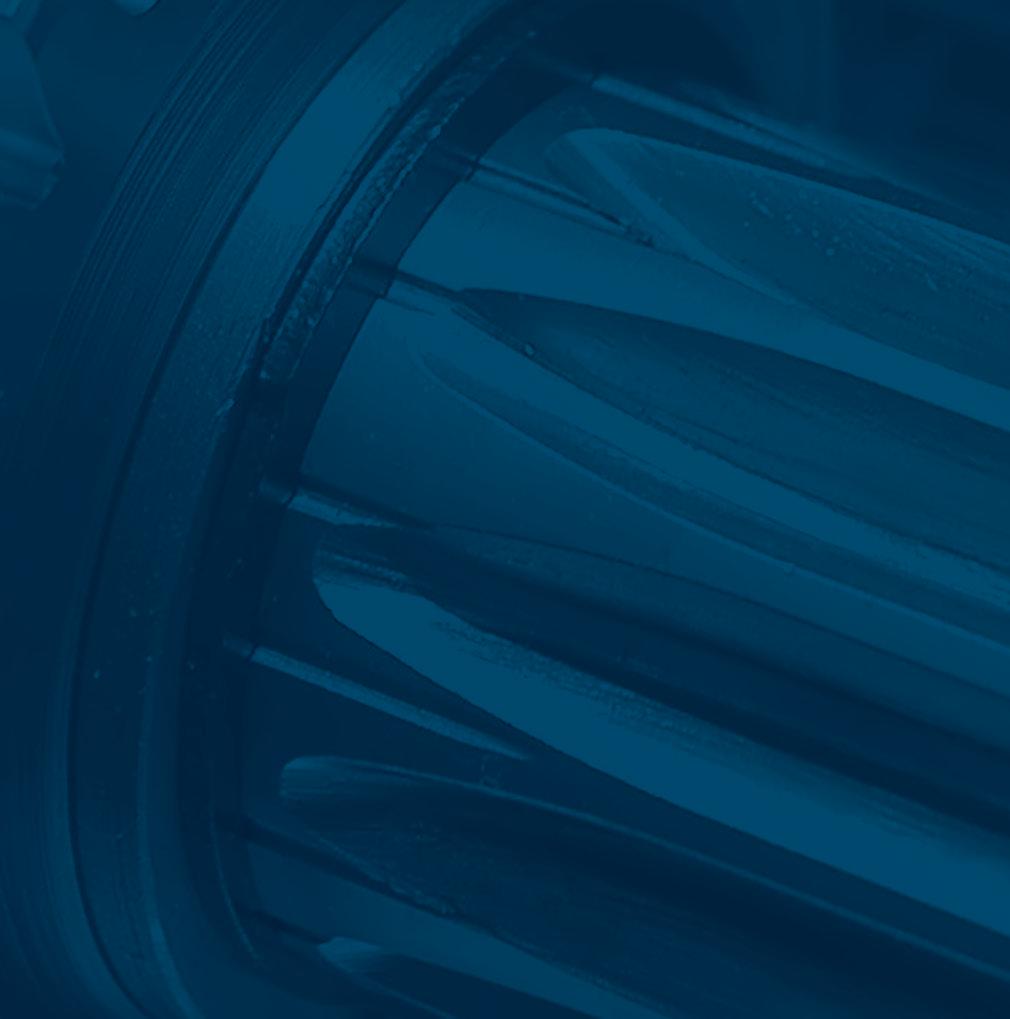
For more information or to register for our upcoming workshops, visit pmmiu.org

Delkor Systems; Minneapolis, MN
Learn systematic consultative selling techniques to become trusted advisors to customers purchasing packaging, processing, and automation equipment.
SEPTEMBER 26-27, 2024
Hershey Lodge; Hershey, PA
* Immediately following PMMI’s Annual Meeting


As we approach PACK EXPO International, we must focus on a critical aspect of trade show success: setting appointments before, during, and after the show. PACK EXPO International is not just an event; it’s a pivotal moment to position your company for the upcoming year. With a diverse audience from various industries, standing out and making a lasting impression is more challenging than ever. How can you ensure you’re not just another exhibitor but a standout presence that draws the right buyers?
The key lies in understanding the evolving purchasing landscape. Automation, sustainability, and the increasing complexity of buying groups have changed the game. More buyers seek a rep-free experience, leveraging technology for their purchasing needs. However, amidst these challenges, a golden opportunity exists to excel and gain a competitive edge. Here are the essential strategies to revolutionize your trade show experience and maximize your return on investment:

4. Create a Unique Sales Experience: At the show, your focus shouldn’t be on your equipment or materials but on the job your visitors need to accomplish. Understand how your solution fits into the broader ecosystem of their needs, including areas you may not directly serve.
These strategies are just the beginning. Implementing them with your team is the first step towards transitioning to the next generation of trade show selling— what we refer to as “USX Trade Show Selling.”
“ The key lies in understanding the evolving purchasing landscape.”
1. Systematic Approach to Year-Long Sales: Develop a structured system to engage trade show attendees throughout the year. Our USX process, consisting of four phases—Attract, Engage, Activate, and Develop— helps you identify and engage your ideal client continuously.
2. Sharpen Your Ideal Client Profile: Clarity is power. Understanding who your ideal client is and how you can uniquely serve them is crucial. This involves more than just showcasing your products; it’s about demonstrating how your solutions alleviate their specific pain points. Your sales team needs to be adept at converting product features into solutions that address the real issues your clients face.
3. Embrace Social Media Engagement: The role of social media in sales has evolved. It’s no longer just a marketing tool but a vital part of your sales strategy. Your team should be proactive on platforms where your target clients are active, using these channels to engage, inform, and attract potential buyers.
To delve deeper into these strategies and learn how to implement them effectively, join us for our upcoming webinar “Elevating Trade Show Strategies: How to 10x Your Investment at PACK EXPO International.”
If you cannot attend the webinar, use this article as a discussion starter within your company. Develop a plan to upgrade all aspects of your trade show sales process, ensuring that you’re prepared to meet the challenges and seize the opportunities of today’s dynamic buying environment.
Remember, being unique and understanding your customers’ needs is the key to standing out in the crowded trade show environment. Embrace these changes, and you’ll avoid being transactional and create a memorable and impactful presence at PACK EXPO International. ■
WEBINAR: Elevating Trade Show Strategies: How to 10x Your Investment at PACK EXPO International
July 18th, 2pm (Eastern Time) Register at packexpointernational.com/exhibiting/ exhibitor-webinars
“Successful Selling @ PACK EXPO” class
July 30-31, Chicago August 28-29, Chicago Register at PMMIU.ORG
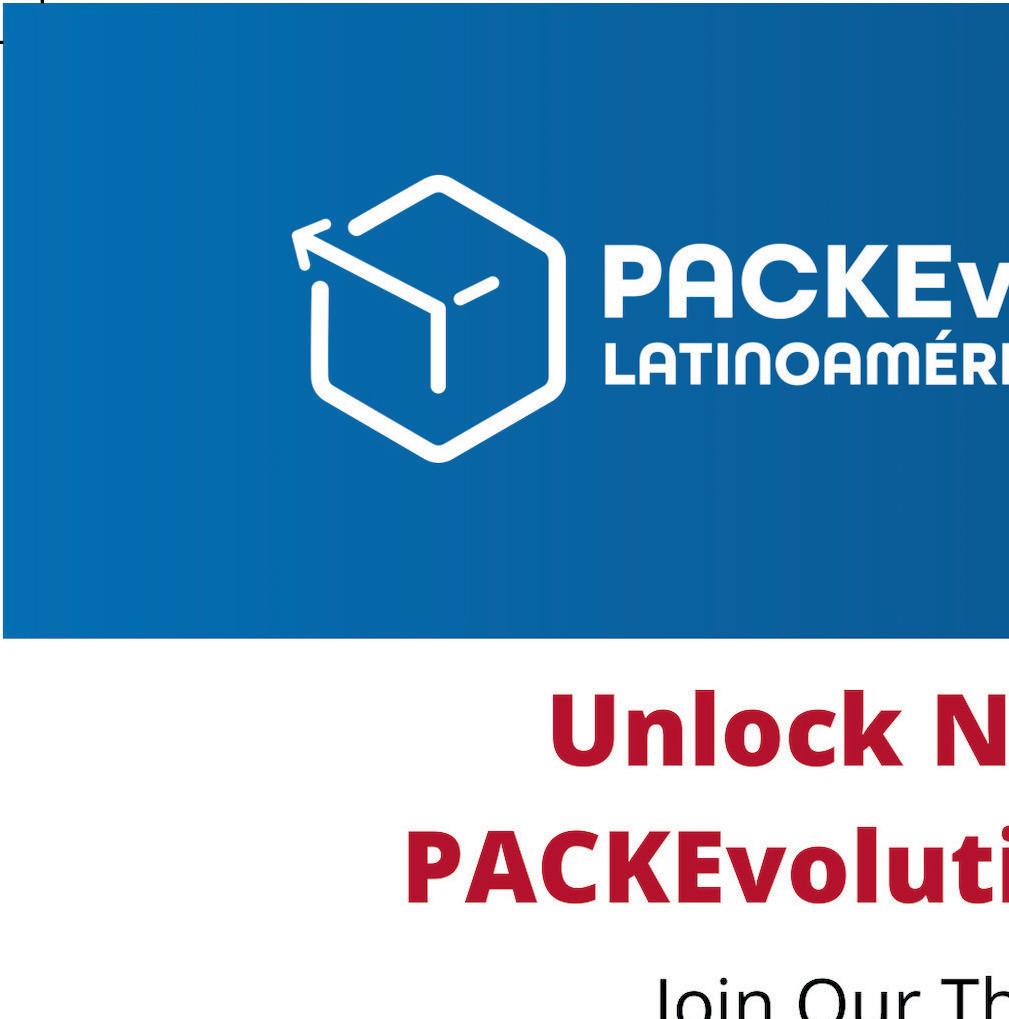
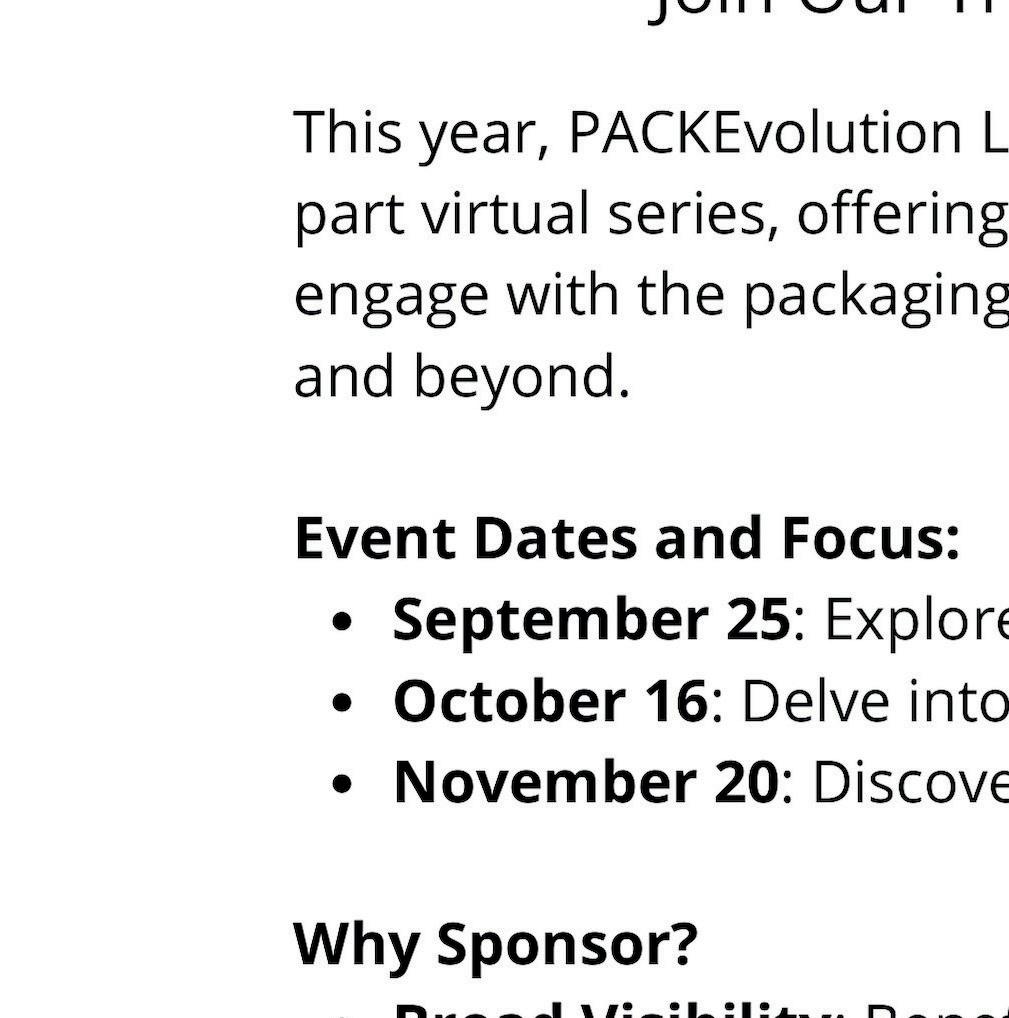

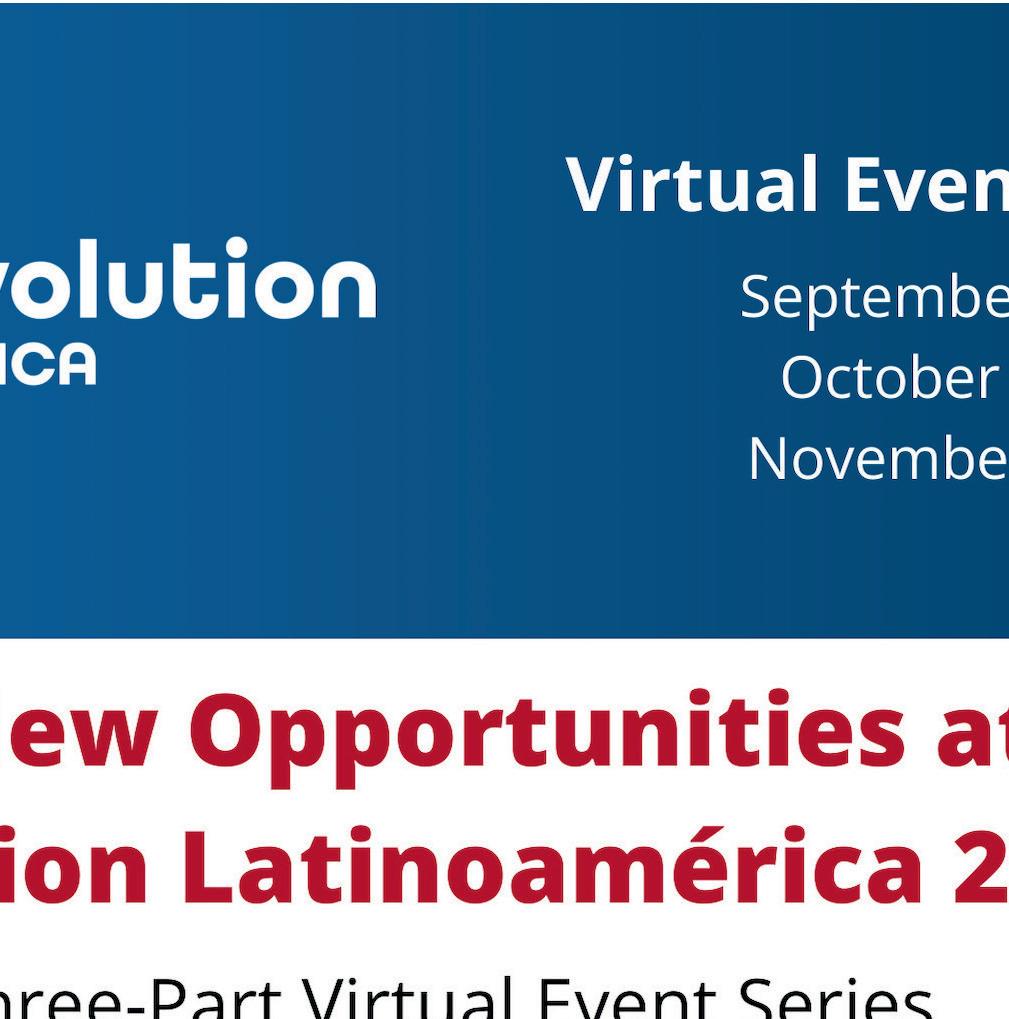

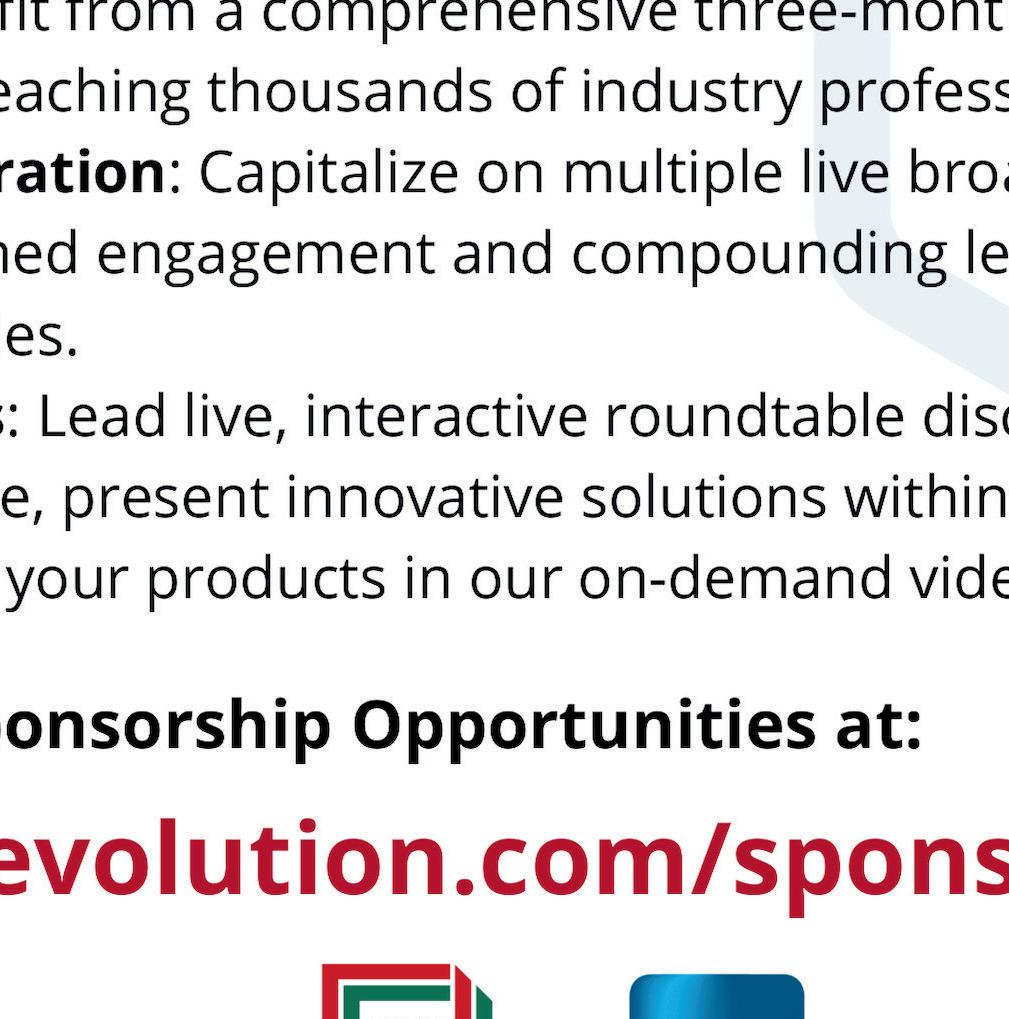


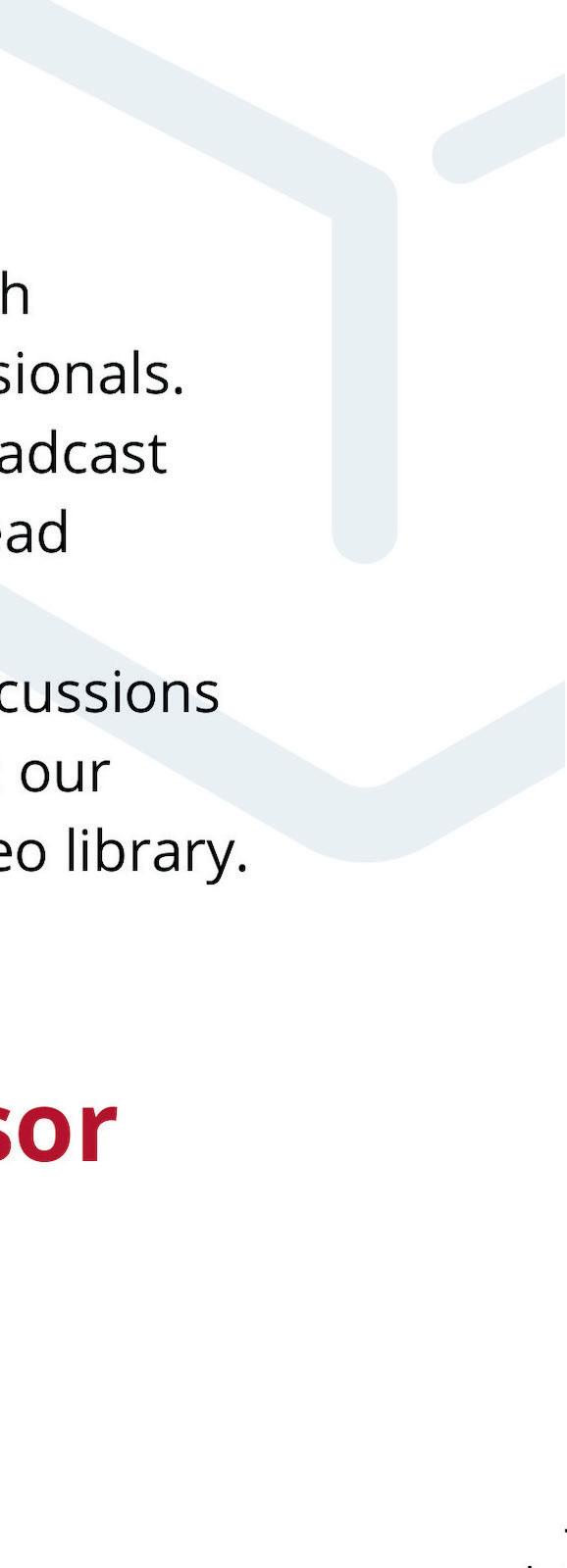
Stop using sports car PC performance when you need the solid, truck-like reliability of an IP67 iPC.
By Tom Jensen, Head of System Solutions at Murrelektronik
As Industry 4.0 gains momentum, the focus on data transfer from the plant floor to areas where it can enhance cost reduction, efficiency, and flexibility for manufacturers has intensified. This shift in emphasis has brought the iPC, the ubiquitous “personal computer” used in industrial applications, into the spotlight. The features required for its optimal performance have evolved with the digital revolution, falling into three key categories: environment, connectivity, and feature set.
Many manufacturers have been happy enough to take “hardened” consumer products and adapt them to the shop floor. It’s worked until now because many industrial technology providers haven’t made IP6x-rated products affordable enough. Manufacturers could pay a lot for products that were limited in features, or put a consumer product with many options into the industrial environment. The problem with this is that you have a sports car doing the job of a truck.

connections to segment all the communication into separate channels that keep local traffic isolated to where it needs to be. Lastly, the real goal of digitalization is to collect data at the edge, which also requires an array of inputs. Even if you find the hardware to add to the consumer PC box, it will be expensive and lowperformance, with much-required support. It’s like adding a diesel engine to your sports car.
“ It’s like adding a diesel engine to your sports car.”
Environment – Most PCs only have an IP20 rating; you must put them into a cabinet to protect them. This is not bad, but you are adding cost to something that doesn’t match the applications in your industrial space. Cabinets seem cheap until you add components (cable entry, power supplies, ethernet switches, etc.) and realize your pseudo iPC costs a lot. What is needed are IP67 iPCs that can be bolted to a wall anywhere in a plant and are tamperproof.
Connectivity – Consumer PCs do a great job connecting to the outside world, but industrial communication isn’t great. First, you overload too much communication on too few TCP connections. This leads to poor performance and security because users mix IT and OT domains, causing conflict internally and with security concepts.
It is then very important for your PC to have enough
Feature set – Now that you’ve created your killer “inexpensive” sports truck, you need it to work. The typical factory applications that need software support are manual assembly stations, machine learning to improve efficiency, and Artificial Intelligence (AI) for inspecting and machine accuracy. The output of these tasks feeds the next level of tasks: line integration and local data collection. Then we get to the last class of tasks where edge applications must communicate with the cloud (MQTT, OPC/UA, and Enterprise software connections), all under IT security protocols. This means you need an operating system that can provide functions like security, hypervisors (the ability to cordon applications to CPU cores), not to mention simply add drivers and apps. It becomes obvious that any operating system that is “homegrown,” like PC/ PLC pseudo systems and Operating Systems (OS) that auto-update, is out of the question. This leaves very few OS-like Linux variants for IT departments to validate for use by OT on the factory floor. In general, Linux provides well-known, defendable, versatile functionality that can be updated.
To put it all together, technology providers have responded with a new class of IP67 iPCs that are affordable and fulfill the requirements outlined above. IP rated to allow cabinet-free installation in harsh environments, multiple standard ports for all current and legacy network and industrial protocols, based on standard operating systems to allow for security, application support, and communication to the cloud.
Finally, affordable high-performance trucks that can carry their load and still win races! ■

During a PPWLN Learning Circles Webinar on communication, three experts discussed how imposter syndrome, perfectionism, and people-pleasing deter impactful dialogue.
By Sean Riley, Editor-in-ChiefThe most recent Packaging and Processing Women’s Leadership (PPWLN) Learning Circle: Communications webinar explores the subtleties of digital communication, addresses gender and generational gaps, and helps combat imposter syndrome with confidence. Led by moderator Sharon Taylor, director of marketing, PMMI Media Group, PPWLN Leader Joyce Longfield, Principal of HPP Applications, Good Foods Group, LLC, and Heather Whelpley, an award-winning author and leadership consultant, dive into effective strategies for overcoming communication hurdles. The trio discussed three hurdles: imposter syndrome, perfectionism, and people-pleasing.
Imposter syndrome is feeling like you don’t know enough, aren’t qualified enough, haven’t enough experience, or aren’t smart enough to be in your position at work. It can be a significant barrier to sharing an authentic voice as well as advocating for future career moves and other similar pieces.
“ The key to overcoming these barriers begins with vulnerability and recognizing each barrier’s existence.”
point anyone. I can’t say no; I shouldn’t upset people or rock the boat. I need to look like I have it all under control.” However, as mentioned earlier and reiterated multiple times during the webinar, these rules are not self-generated, even though they may feel like they are when they reveal themselves as an inner critic or script in one’s mind. They come from childhood experiences with family or school and how women’s voices were and were not allowed to be used. Were you allowed to disagree with authority or not? They come from past work experiences. Did you have a not-so-good boss a few years ago who called you out for making mistakes?
If any of these ring true, a people pleaser might still be working hard to make everything perfect, even if the team they are on now is more accepting.
Perfectionism is when one feels like something must be perfect before sharing, always needing to research an idea a little bit more, reading the email a fourth time before hitting send, or walking through that PowerPoint an eighth time before giving it to that next person to review or presenting it. The feeling of “I’m not allowed to make a mistake.” Or “What if I do speak up and I get a question I don’t know the answer to?” Or “What if I flop on my face? What if I say the wrong thing?” All those fears can get in the way of sharing a true voice. According to the Learning Circle experts, peoplepleasing is a trait that tends to apply more to women. It gets handed down generationally, within families, or from society as a definition or rule about how women are and are not supposed to appear in the world. Women are challenging these perceptions and “rules,” creating an environment where the definition of how a woman should be is evolving. But, for many, they still exist, and women still feel them. According to the webinar these can feel like, “I’m not allowed to disap -
The women on the panel felt strongly that bias, microaggressions, and discrimination play into the three deterrents mentioned as it relates to being a woman, but also as it applies to women of different races and ethnicities. Per the panel, white women and women of color are going to be handed different sets of rules and expectations.
The key to overcoming these barriers begins with vulnerability and recognizing each barrier’s existence. This in and of itself can allow a person who struggles with these obstacles to become grounded and recognize that they are inadvertently self-sabotaging their communication skills. The panelists cited selfawareness as a substantial goal in becoming better at communication. ■
To watch the entire PPWLN Learning Circle Communications webinar on-demand, visit pmmi.org/womens-leadership-network/videos.

Only a small number of companies successfully link strategy to action; here are some ways to make that link quicker, easier, more inclusive, and at multiple levels within your organization.
By Stephen M. Perry, Ph.D., Co-Founder at FSO Institute WorkforceOne of the three most important pillars in the OpX Workforce Engagement document is Connection (Empowerment, Enablement), specifically how a company communicates with employees and helps them understand the company beyond their day-to-day operational activities. When employees don’t see the bigger picture—vision, mission, strategy, action plan— or understand just how their work contributes to it, they are less likely to be engaged.
“ When people are involved, it drives empowerment, the forgiveness of mistake-making, trust, commitment, sharing of information, openness, and cultural cohesiveness.”
Under the Connection pillar, the OpX Workforce Engagement document describes just how the best CPG companies communicate a compelling vision, a well-thought-out strategic plan, a robust business plan, and the corresponding key performance indicators (KPIs) to measure that ensure success (see Success Cycle graphic, opposite page). However, a recent Harvard Business Review article points out that only a small number of companies successfully link strategy to action.
Perhaps the most important reason for this is that those employees responsible for the day-to-day operational activities are rarely involved in strategy development because it is traditionally seen as the domain of senior-level executives. As a result, the corresponding action plan and operational KPIs for which plantlevel employees are now responsible are not fully understood because they were not involved in their development or a robust rollout plan from leadership. In fact, because leadership did not solicit input from the shop floor, the connective KPIs and action plans might not be the best ones.
While the OpX Workforce Engagement document identifies some solutions to this dilemma, some recent work by the FSO Institute offers additional insights and experiences to make the link between strategy and action quicker, easier, more inclusive, and at multiple levels within the organization. Most importantly, it provides engagement opportunities for day-to-day employees to provide input and help them better understand the why of what they do and just how their work contributes to it.
To learn more about this new way of linking strategy to action, FSO Institute spoke with Dan Sileo, an FSO coach who previously worked for Procter & Gamble, Sunny Delight, and Sugar Creek Foods.
FSO Institute: Dan, you’ve recently worked with some CPG companies that addressed this strategy-to-action link by bringing together senior-level, supervisory, and line employees to align them on vision, strategy, action planning, and outcome measures. Can you briefly describe how you did this?
Sileo: There are four common tools that have been used for many years to drive the process. These are the Success Cycle, the Strength, Weakness, Opportunity, Threat (SWOT) analysis, the Strategy Development Template, and the introduction of the Responsible, Accountable, Consulted, Informed (RACI) chart. A quick word of caution: Many times, people within an organization will push back against these tools as dated and irrelevant because new generational groups think differently. We typically lead a discussion about
how the tools can evolve to meet the needs, and if we include the generational groups the organization is concerned about, it typically addresses the issue.
We begin with some just-in-time training on the Success Cycle and explain how the Vision and Strategy portions set the direction, and the Action and Outcomes sections deliver role clarity and resource deployment.
The final part of this discussion relates the Success Cycle to the PDCA process (Plan, Do, Check, Act), which makes the rollout conversation to the shop floor more relevant since it is a widely known process.
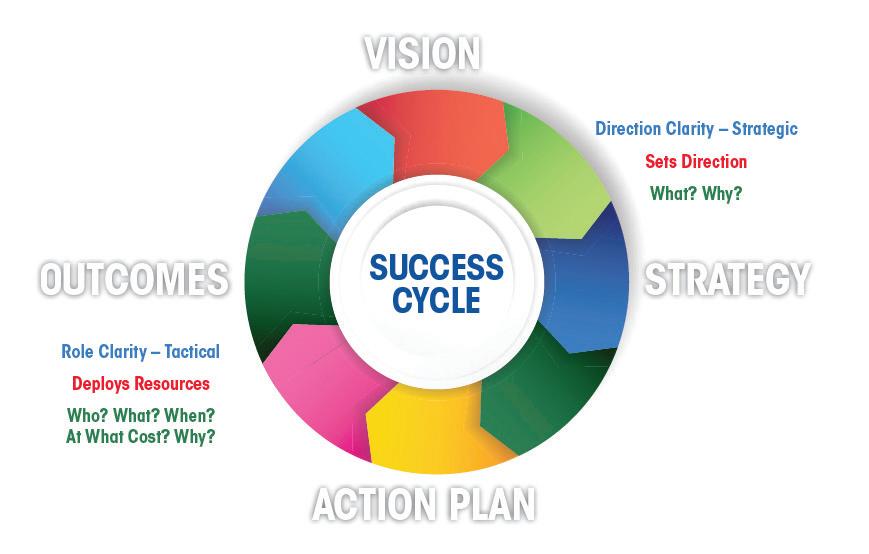


Just-in-time training on the Success Cycle explains how the Vision and Strategy portions set the direction and the Action and Outcomes sections deliver the role clarity and deployment of resources.
We then conduct a SWOT analysis, typically with a few groups consisting of a cross-section of functions and levels. This brings diversity of thought and begins the process of buy-in to the strategies to be implemented.
Next is a scan to look for a common grouping of items that the working groups believe must be addressed. We try to help them limit it to the top five and capture others as the potential next round of focus areas once the current ones have been sufficiently addressed.
Finally, we discuss the path forward to include action planning. Once senior leadership is aligned, we demonstrate how a RACI chart aligns and deploys resources.
FSO Institute: Linking the SWOT analysis to an actual strategic plan has traditionally been a slow, laborious process. I understand that you used artificial intelligence (AI) to speed up the process and make this part of strategy development far less cumbersome and time-consuming. How did you do this?
Sileo: Embracing AI to do the first blush of analysis really did speed up the process. What normally would take a few days and multiple iterations across at least two to three people to ensure groupings make sense, AI could do this in just a few minutes. We type up the SWOT analysis in one PDF document, and the five top themes identified in another and ask AI to place each item in the best group. After we do a quick run-through to make sure what was presented makes
sense, we then ask AI to convert the groupings it just made into strategy statements of no more than two to three sentences. Again, we scan to make sure that what is presented makes sense and adjust as necessary. We now have a document to share with leadership to begin the catch-all process (feedback from all stakeholders).
FSO Institute: You’ve had a lot of experience in getting plant-level, operations employees more engaged in their work. What do you see as the major benefits of involving them more in the strategy-toaction planning process?
Sileo: We like to drive the Buy-in, Ownership, Advocacy (BOA) model. By getting involvement early in the process, we jumpstart the buy-in part of the model. A way to think about this in a more detailed way is explained by the Attributes of a Culture of Collaboration (Ali, Pascoe & Wayne). When people are involved, it drives empowerment, the forgiveness of mistake-making, trust, commitment, sharing of information, openness, and cultural cohesiveness—all of which drive employee engagement. In other words, don’t just tell them; involve them. ■
For more
OpX Leadership Work Products visit opxleadershipnetwork.org.
The new JW Winco U-handle EN 6284 is designed to enhance the operation of systems and machines. It features an integrated bu on and a large, colored, backlit area on the back of the handle. These elements can be used individually or in combination, providing a versatile tool for system control and process monitoring.

The EN 6284 prioritizes safety in its design. The two-channel switch element, available in di erent contact configurations, enhances operational safety. It can handle various applications with DC and AC voltages from 24 to 240 volts and currents of up to 3 amperes, ensuring compatibility with various systems.
The light element on the back of the handle comprises a form-fi ing di usor made of robust polycarbonate that is tightly a ached with an IP 67 protection rating. It homogenously di uses the light produced by the interior LED module in various colors and brightness levels depending on the activation of the 24-volt RGB matrix.
JW Winco, www.jwwinco.com
The new Distributed Energy Resources (DER) Controller from WAGO is a library function block with a control algorithm for voltage, frequency, and reactive power control. To ensure a reliable power system, the DER connection to the grid requires communication between the energy source and the operator. Standards like IEEE 1547-2018 have been implemented to provide a trouble-free connection between systems.
Of the 11 clauses related to IEEE 1547-2018, WAGO’s DER supports clauses 5 and 10. Clause 5 deals with reactive power and voltage/power control, which reinforces Clause 10, which handles interoperability for information exchange. The library function block in these controllers is programmed with CODESYS 3.5 so ware and has been validated and verified by a Nationally Recognized Testing Laboratory. WAGO, www.wago.us

Novanta Corporation’s laser processing Integrator Packages help original equipment manufacturers (OEMs) and system integrators get their machines and in-line laser processing systems up and running faster and easier. The factory pre-aligned and calibrated sub-system includes a CO2 laser source, scan head, controller, so ware, beam expander, connector cables, and mounting hardware, all from a single source.
For OEMs and system integrators, the integrator packages save precious time and resources typically associated with integrating individual components provided by separate suppliers. Additionally, the Integrator Package is enhanced with Novanta ScanMaster™ Controller (SMC) and ScanMaster™ Designer (SMD), the industry leading laser controller and so ware package.
Novanta Photonics, www.novantaphotonics.com

ELESA’s new STP threaded stems, designed for leveling equipment and machinery, are cra ed entirely of SUPERTechnopolymer: a polymeric plastic material which boasts excellent resistance to chemical agents, and optimal thermal properties.
The widespread metal-replacement trend, which impacts an increasing number of sectors today, is driving the development of the range. These materials, known for their mechanical strength and temperature resistance, have opened up new applications that were traditionally the domain of metals.
ELESA’s leveling elements cover a wide range of materials, o ering various combinations for di erent applications, sectors, and operating conditions. From the standard configuration with a polyamide or polypropylene-based technopolymer base to stems with zinc-plated steel or AISI 304 stainless steel joints, ELESA provides versatility. Options also include no-slip disks in NBR rubber or anti-vibration discs for damping vibrations, as well as variants entirely made of zinc-plated steel and di erent AISI classes of stainless steel, including 316L for special applications and Hygienic Design for environments requiring certified hygiene levels. Elesa, www.elesa.com

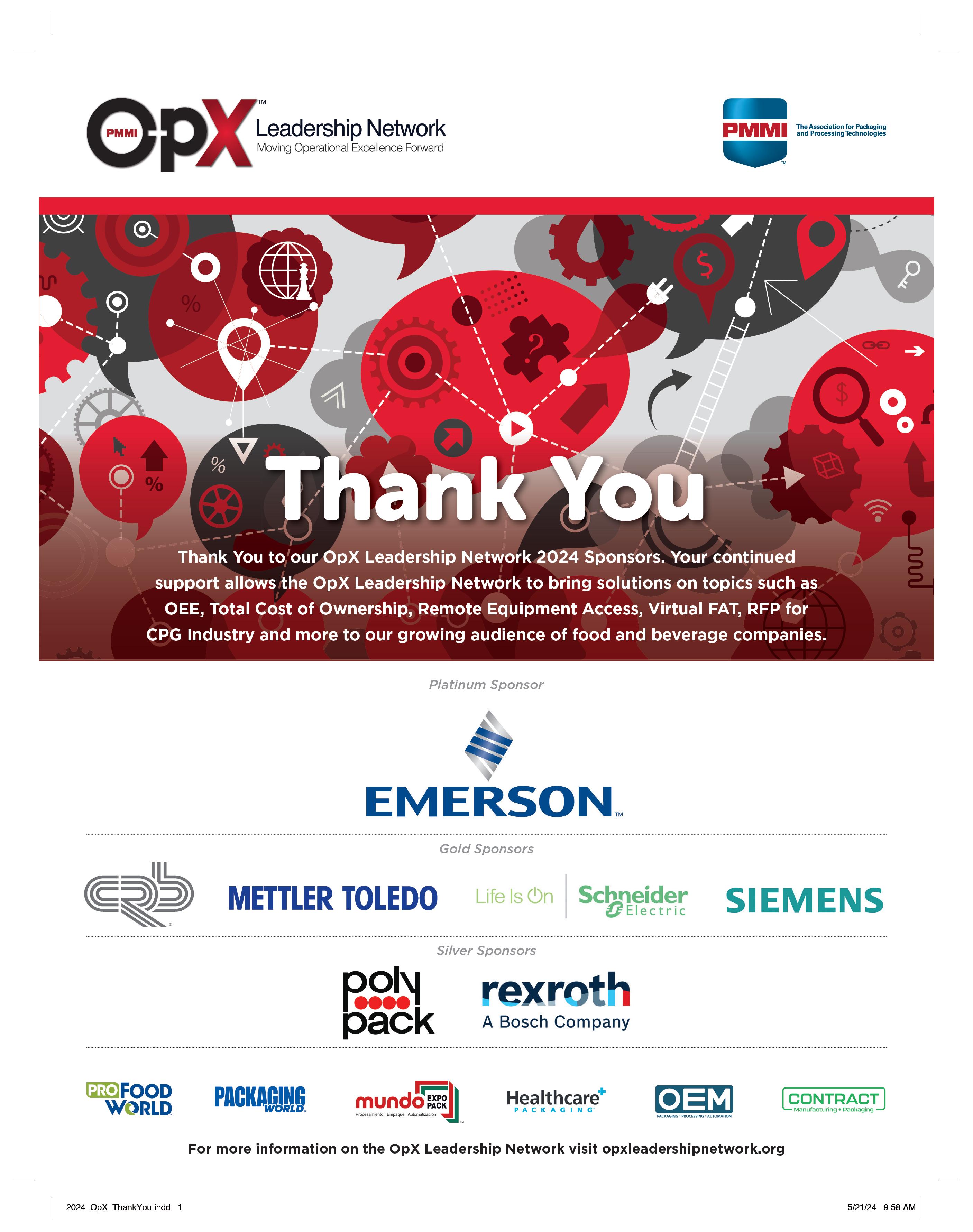
Rockwell Automation, Inc., the largest company dedicated to industrial automation and digital transformation, launches a new low voltage motor control center (MCC) for IEC markets globally, the FLEXLINE™ 3500. With this motor control center, manufacturers can unlock production data and increase uptime and productivity through a portfolio of smart products.
In manufacturing and processing operations, every production minute counts. Yet, it’s reported that the average global manufacturer faces up to 800 hours of equipment downtime per year. Depending on the industry, downtime can cost $100,000 per hour or more. By integrating with smart motor control devices, the FLEXLINE 3500 MCC delivers real-time operation and diagnostic data for critical equipment. Global manufacturers rank predictive maintenance as the top strategic technology to reduce downtime.


The modular motor control center design is customizable to meet many low-voltage motor control applications and factory footprints while the technology is engineered for a wide range of industries, from food and beverage to oil and gas. And when FLEXLINE 3500 motor control centers are integrated with smart variable frequency drives, manufacturers can significantly reduce power consumption.
Rockwell Automation, www.rockwellautomation.com
Carlo Gavazzi is excited to introduce three new series of M12 Capacitive Sensors with IO-Link Communications. Based on our 4th generation TRIPLESHIELDTM sensors, these CA12 Series Sensors represent the ideal solution for industrial automation equipment in applications where sensing performance must be continuously and accurately monitored and logged. Semiconductor and printing applications benefit from this kind of data for accurately detecting di erent-sized objects, shapes, and dielectric values. These sensors have been designed to adapt to industrial applications flexibly. A housing option is available for every application— PBT for less challenging environments, AISI316L stainless steel for strength, and PEEK o ering a smooth surface to reduce the accumulation of dust or liquids. In addition to the full range of technical features provided by our capacitive sensor families, the IO-Link communication allows additional advanced data, such as QoR (Quality of Run), QoT (Quality of Teach), temperature and dust alarms, and diagnostic parameters. With this information, predictive maintenance can be scheduled before sensors fail, which increases uptime. Finally, the M12 Capacitive Sensors are fully programmable and customizable via IO-Link. Carlo Gavazzi, www.gavazzionline.com




Wipotec Technology‘s new MMS 2 is an ideal weigh cell for production lines in a variety of settings, including quality control scenerios for vial and syringe filling. The MMS2 offers IP65 protection for safe guarding components against dust, foreign materials, water, and other environmental factors.
Check out our Wipotec show truck: an entire truck full of innovative solutions, ready to show and demonstrate your applicable products. Scan here to learn more.
OEM Magazine (ISSN# 2377-293X) is a trademark application of PMMI, The Association for Packaging and Processing Technologies. OEM Magazine is published four times annually by PMMI with its publishing office, PMMI Media Group, located at 401 N. Michigan Ave., Suite 1700, Chicago, IL 60611; 312.222.1010; Fax: 312.222.1310. Periodicals postage paid at Chicago, IL, and additional mailing offices. Copyright 2024 by PMMI. All rights reserved. Materials in this publication must not be reproduced in any form without written permission of the publisher. Applications for a free subscription may be made online at www.oemmagazine.org/subscribe. Paid subscription rates per year are $80 in the U.S., $125 Canada and Mexico by surface mail; $200 Europe, $400 Far East and Australia by air mail. Single copy price in U.S. is $20. To subscribe or manage your subscription to OEM Magazine, visit www.oemmagazine.org/subscribe. Free digital edition available to qualified individuals outside the United States. POSTMASTER; Send address changes to OEM Magazine, 401 N. Michigan Ave., Suite 1700, Chicago, IL 60611-3789. PRINTED IN USA by Quad Graphics. The opinions expressed in articles are those of the authors and not necessarily those of PMMI. Comments, questions and letters to the editor are welcome and can be sent to: support@oemmagazine.org. Mailing List: We make a portion of our mailing list available to reputable firms. If you would prefer that we don’t include
At the ELC, PMMI’s Board of Directors approved four new programs to improve your business.
Jim Pittas, President & CEO, PMMI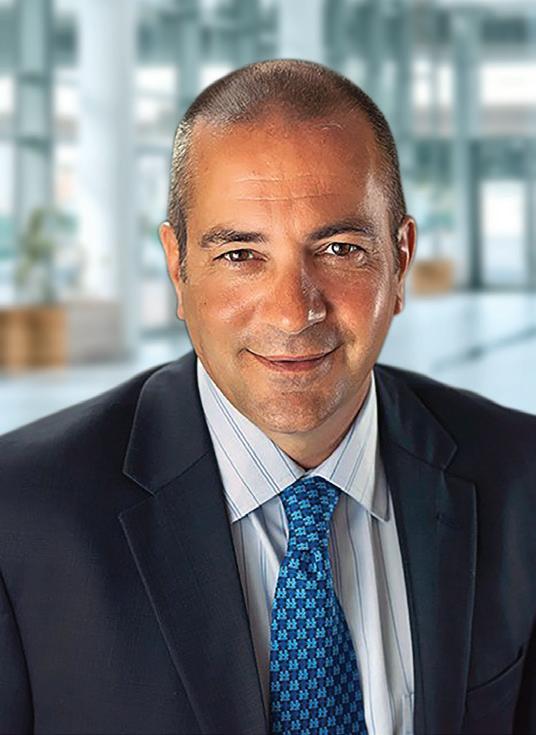
In last issue’s column (OEM Magazine Spring 2024), I outlined how we utilize PMMI Member Advantage to keep our membership up to speed on all of the programs PMMI offers beyond just our trade shows. I want to continue that theme by highlighting four new programs our Board of Directors approved at April’s Executive Leadership Conference.
Heroes Make America, a unique collaboration with our partners at the Manufacturing Institute, is an exclusive opportunity for PMMI members. This strategic alliance offers a range of benefits, specifically addressing the challenges of finding skilled workers in the manufacturing sector. By providing integrated certification and career-readiness training in partnership with local community colleges, Heroes Make America prepares transitioning service members, veterans, National Guard members, reservists, and military spouses for rewarding careers in manufacturing.
PMMI members have the unique advantage of accessing exclusive recruitment events, including virtual and in-person career fairs, workshops, and Heroes Connect events. This initiative positions PMMI member companies at the forefront of workforce development, enhancing productivity and competitive edge in the global market.
While Heroes Make America focuses on adding to the workforce, SheLeads is a new program for women already in packaging and processing careers. The workshops deepen leadership skills to help managers lead more effectively.
A key aspect of the SheLeads program is the creation of a collaborative environment that allows women managers to seek support and share ideas with colleagues who understand the challenges of leading effectively in a primarily male-dominated work environment.
The course offers an experience where participants can explore leadership content, benefit from tools to enhance their management and communication skills, and engage in conversations that support their effort to step up as leaders in their organizations.
PMMI Expert Connect is our latest asset targeting international business by providing legal counsel and exporting advice. Need advice regarding contracts, general corporate law, or regulatory issues? PMMI can connect you with legal expert Eric Greenberg, from Croke Fairchild Duarte & Beres, LLC, and his extensive experience in our industry. PMMI will even cover the first hour of Eric’s time.
For exporting advice, we have experienced consultants and PMMI exporters available to offer counseling and advice to PMMI members who are either new at exporting or need advice on specific issues or markets. PMMI will cover the cost of a limited number of hours for these experts.
Successful Selling @ PACK EXPO is the newest addition to our portfolio of sales workshops specifically tackling the unique challenges of selling in the packaging and processing markets.
This two-day in-person course focuses on what PACK EXPO exhibitors can do to maximize sales from North America’s largest packaging and processing show. Based on the Sandler Sales System and developed for PMMI with member subject matter experts contributing, this course highlights what exhibitors can do to prepare for the show, provides selling strategies during the show, and presents techniques for following up with potential customers.
This training is especially pertinent this year as EXPO PACK Mexico was, and PACK EXPO International will be the largest iteration of both events in our history. You know I couldn’t make it through a column without shouting out our bread and butter tradeshows! ■
Jim Pittas is the President & CEO of PMMI. He may be reached at jpittas@pmmi.org or at linkedin.com/in/jimpittas.
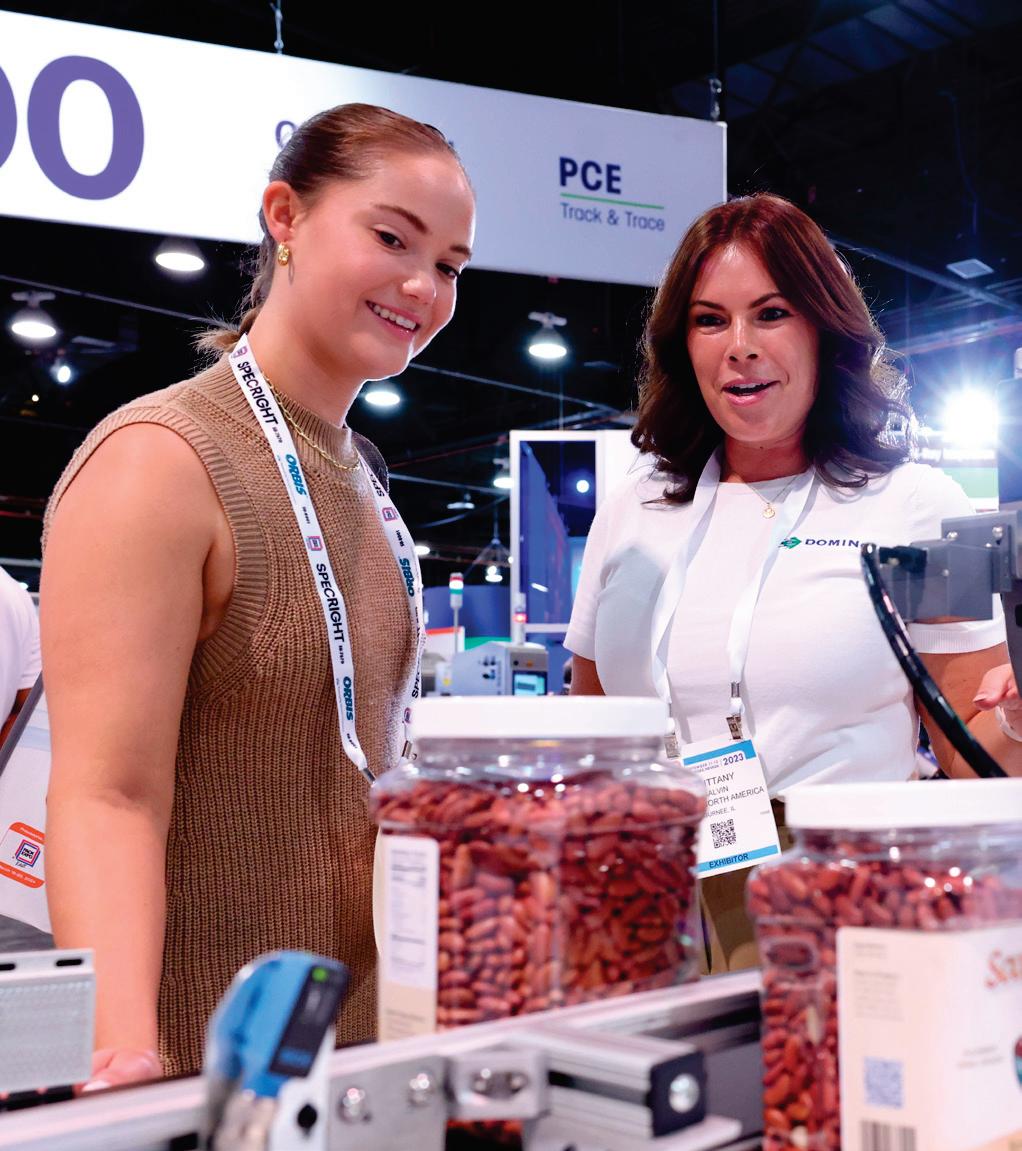


Drive sales at PACK EXPO Las Vegas 2025 and give prospective customers the opportunity to see your solutions firsthand. Seize your opportunity to captivate the attention of buyers from 40+ vertical markets in 2025 by securing your booth today.
71% of attendees make or influence purchasing decisions.
2/3 of PACK EXPO Las Vegas 2023 attendees attended no other PA K EXPO Show - making this the only place in 2025 to connect with these buyers!
84% of attendees say they’re likely to make a purchase as a result of visiting the show.
Source: PACK EXPO Las Vegas 2023 registration data and attendee survey
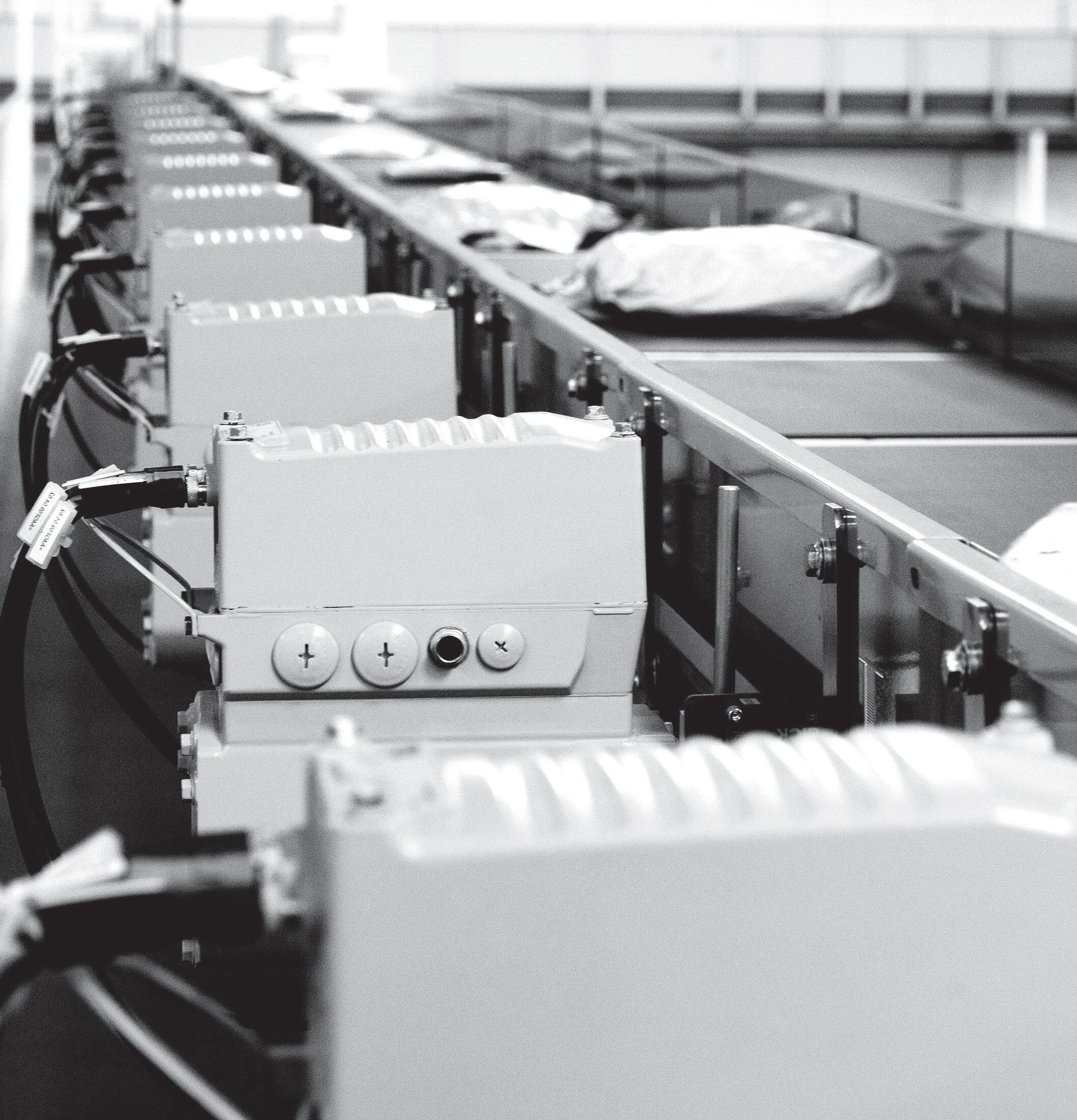
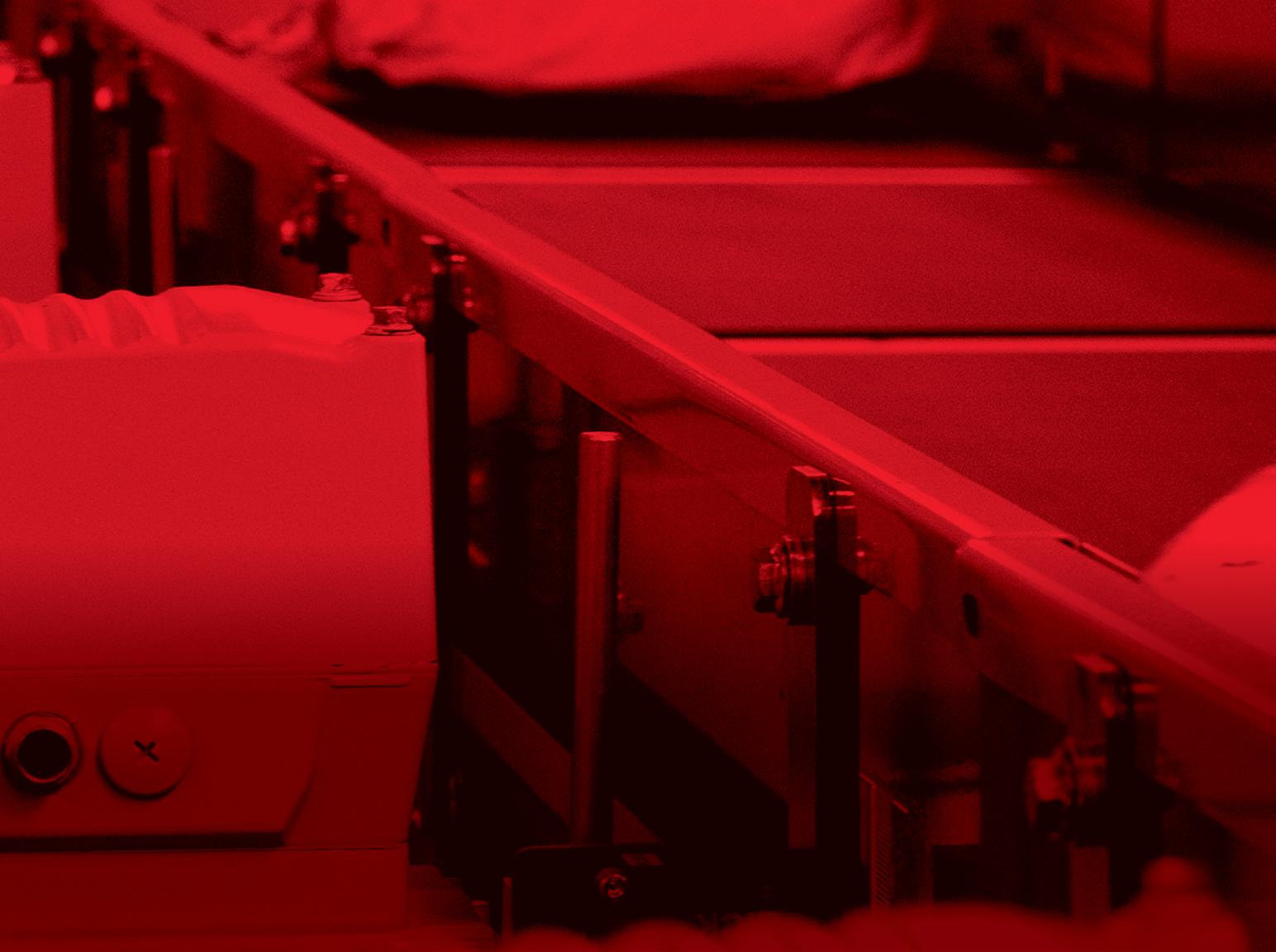






SEW-EURODRIVE engineers the finest Drive Automation solutions in the world. But it is how we serve our customers after the sale which distinguishes SEW-EURODRIVE from the rest of the world. We do whatever it takes to keep your business on the move. Upgrade everthing.